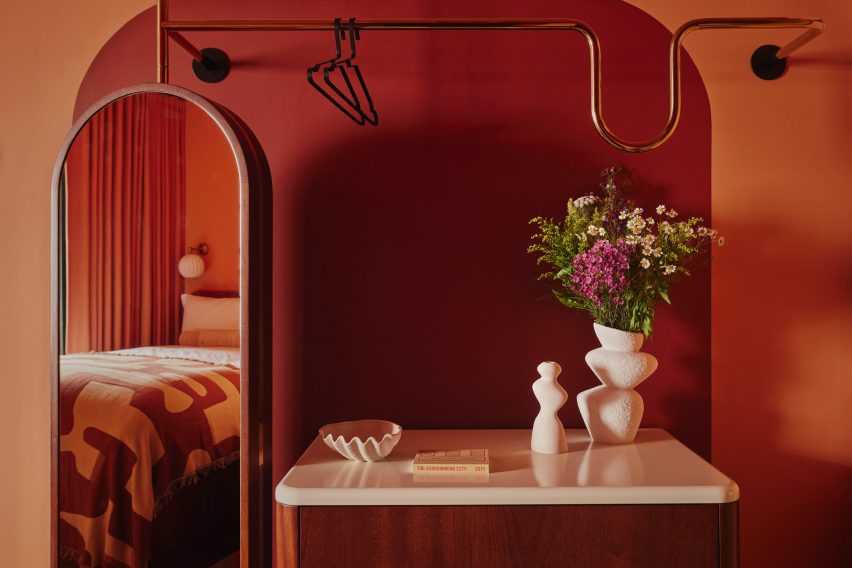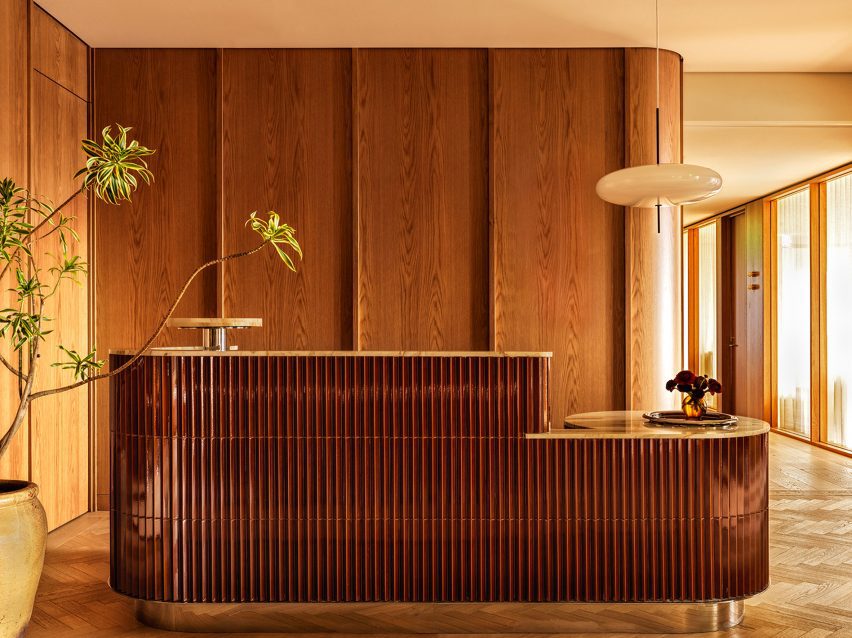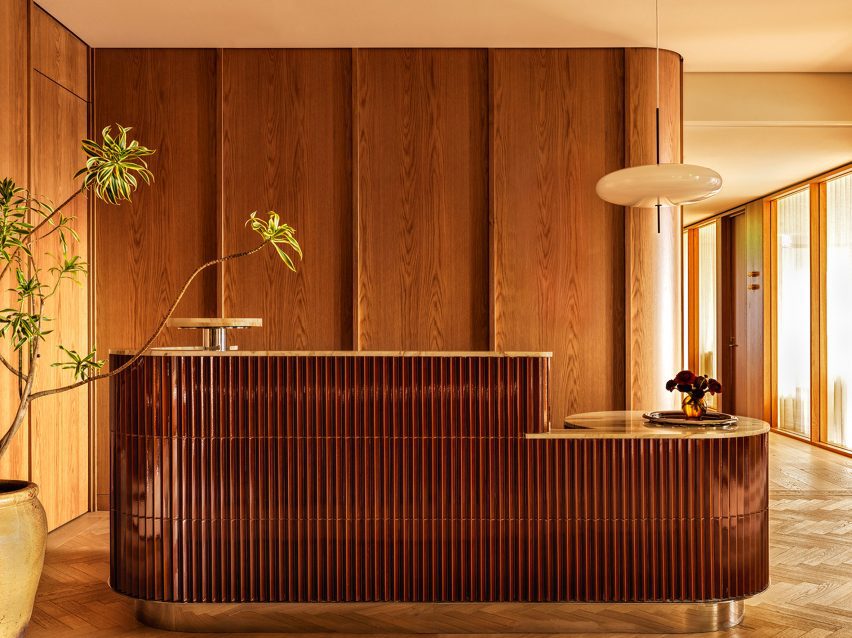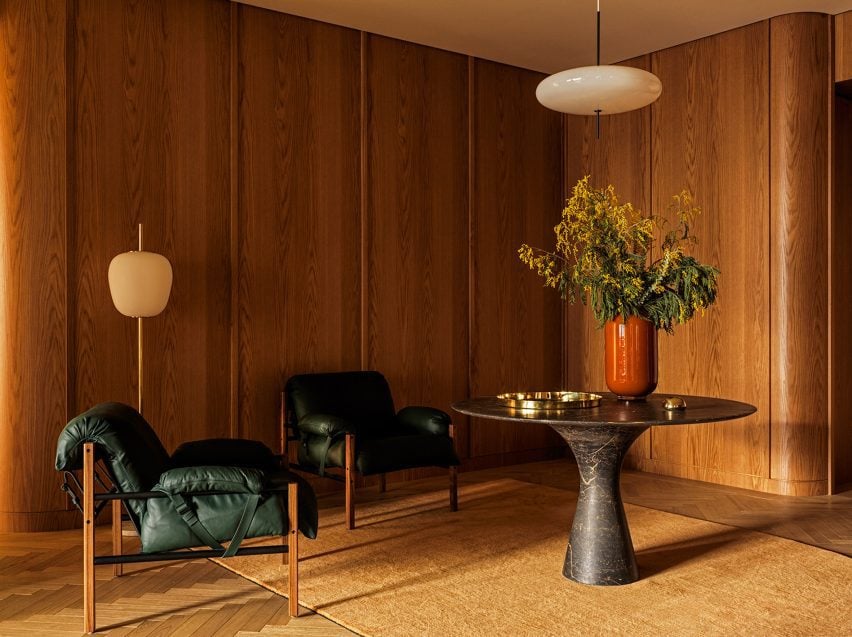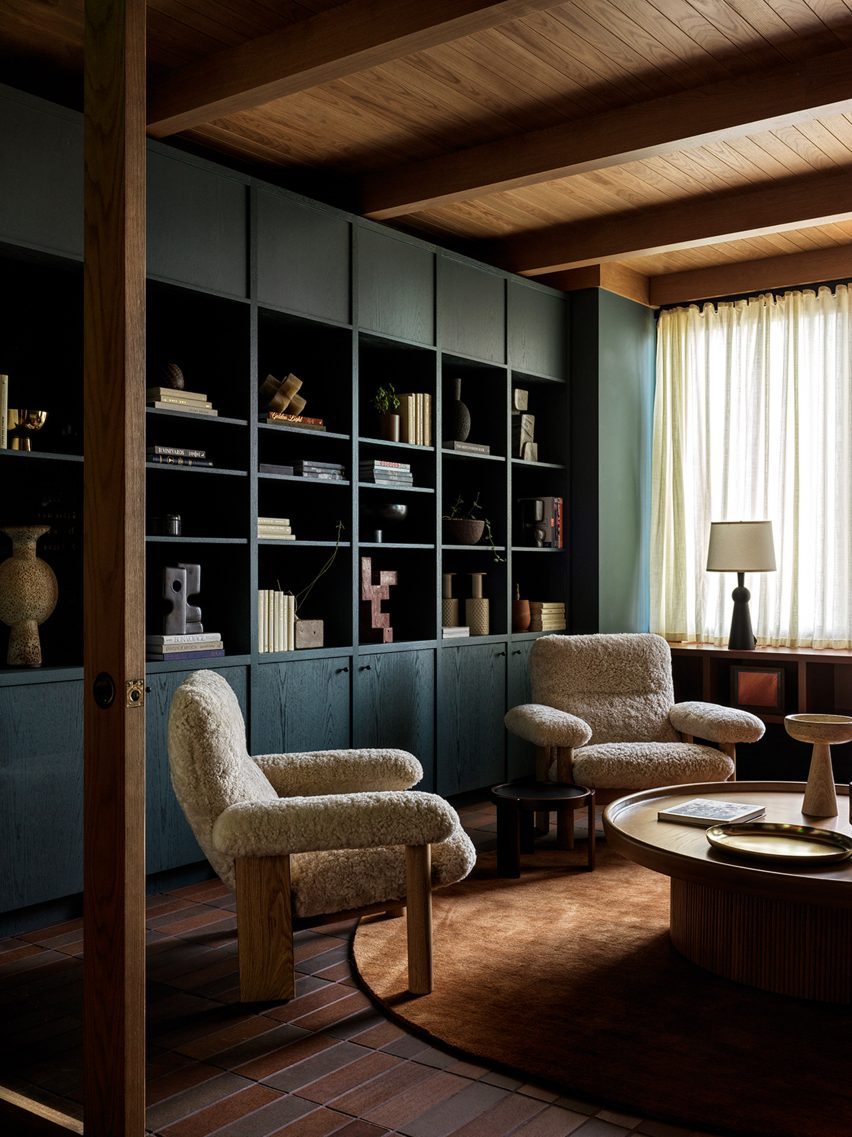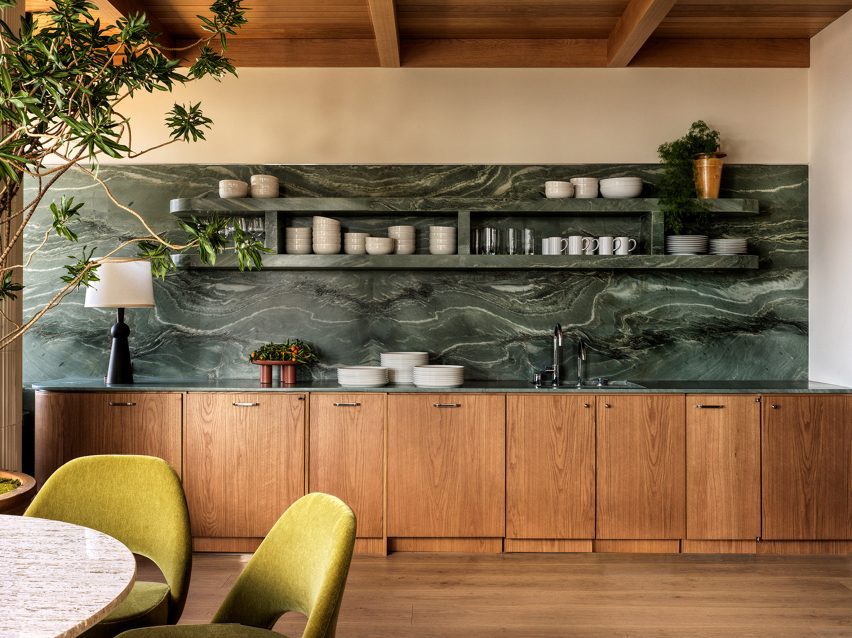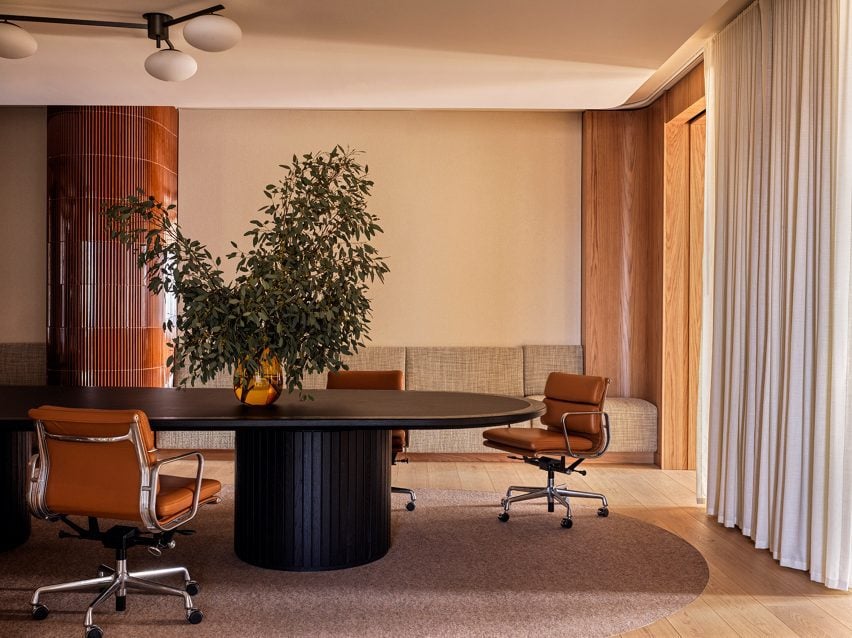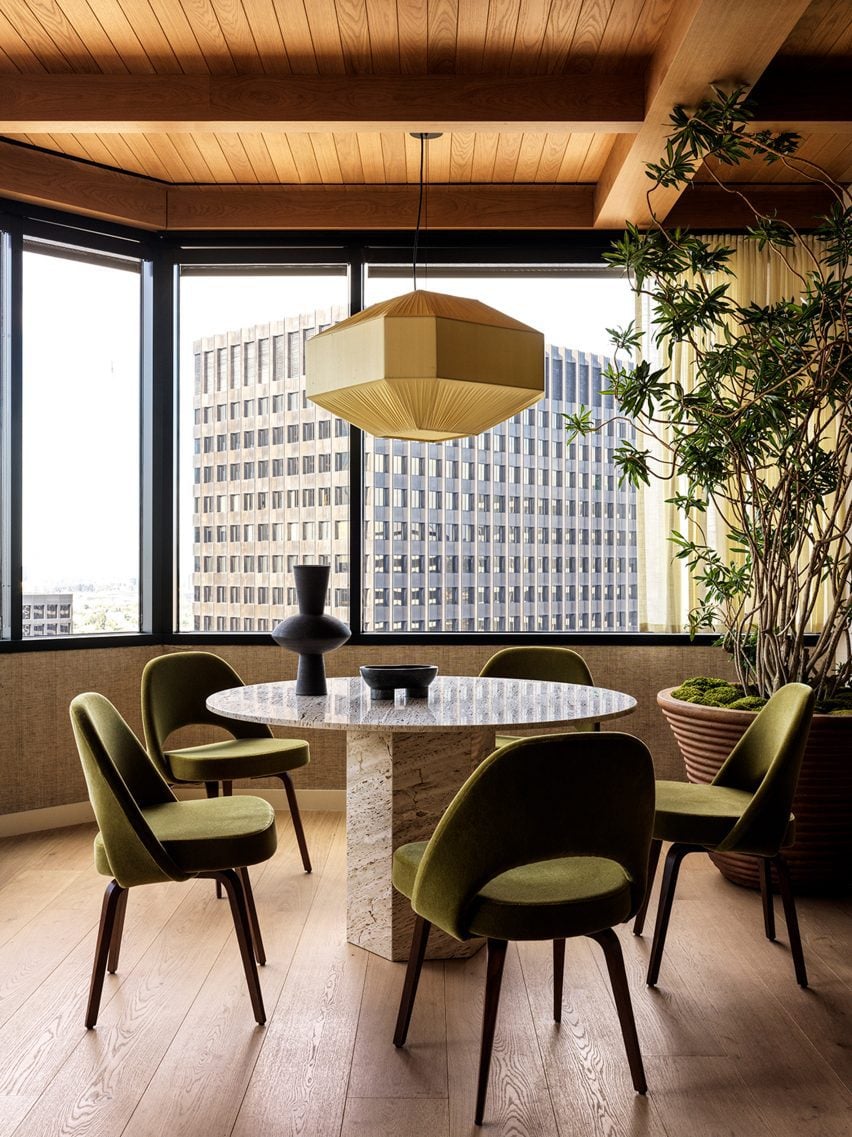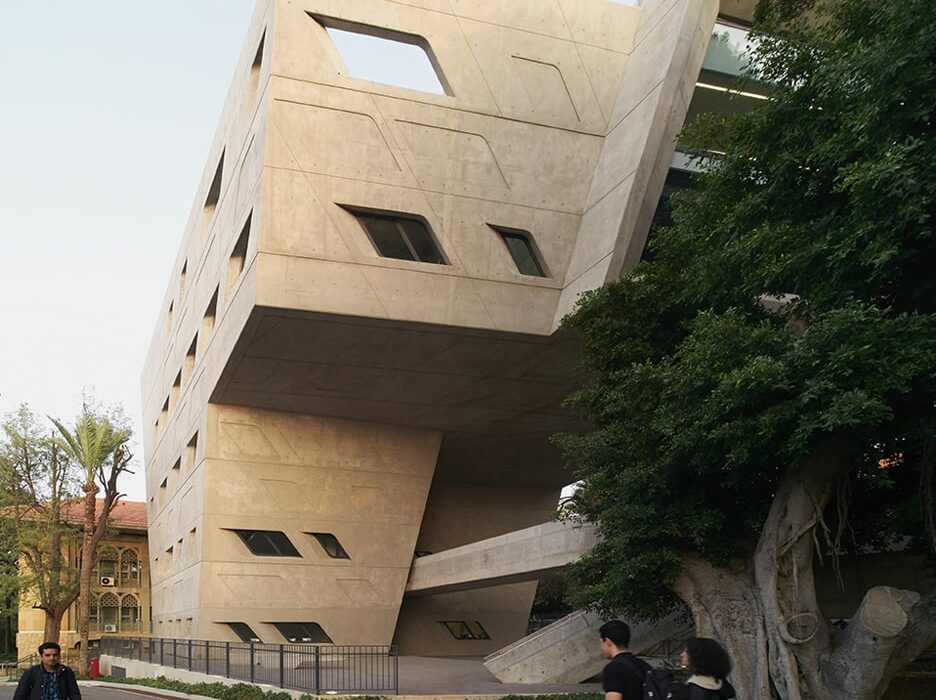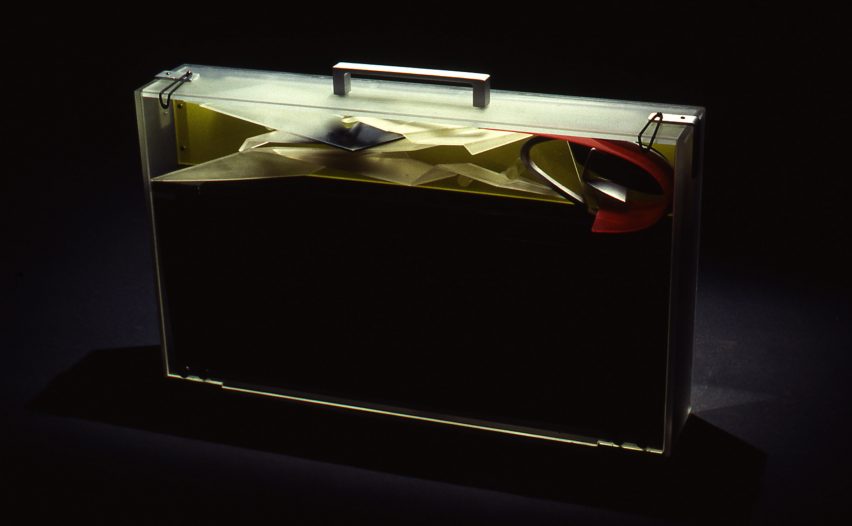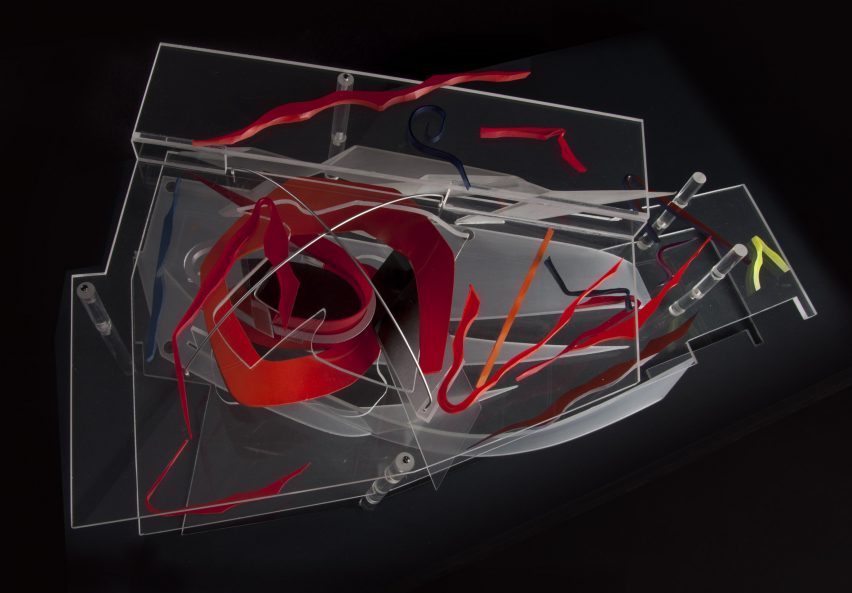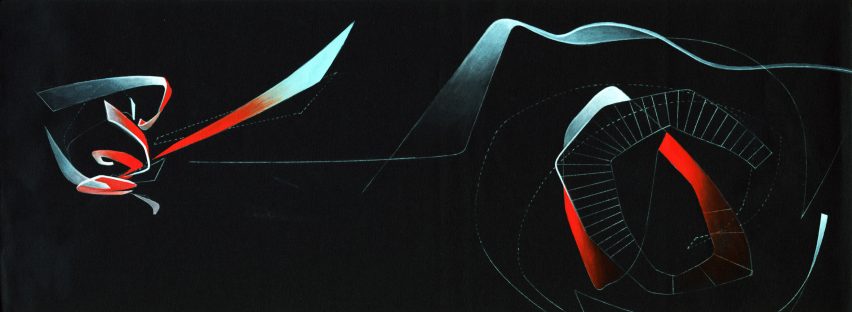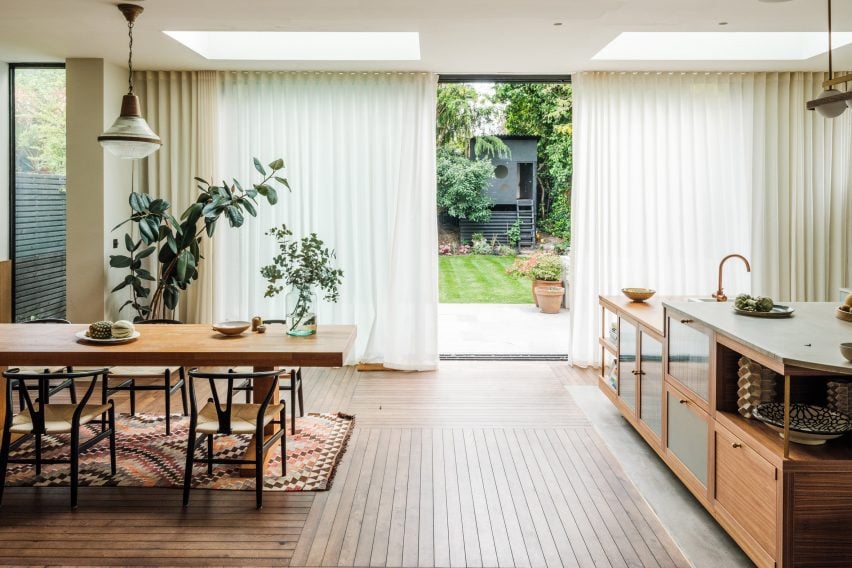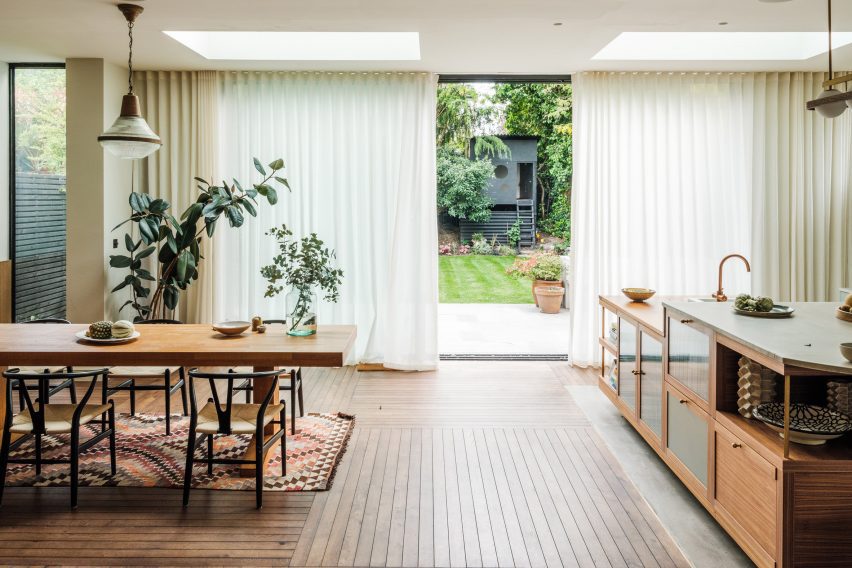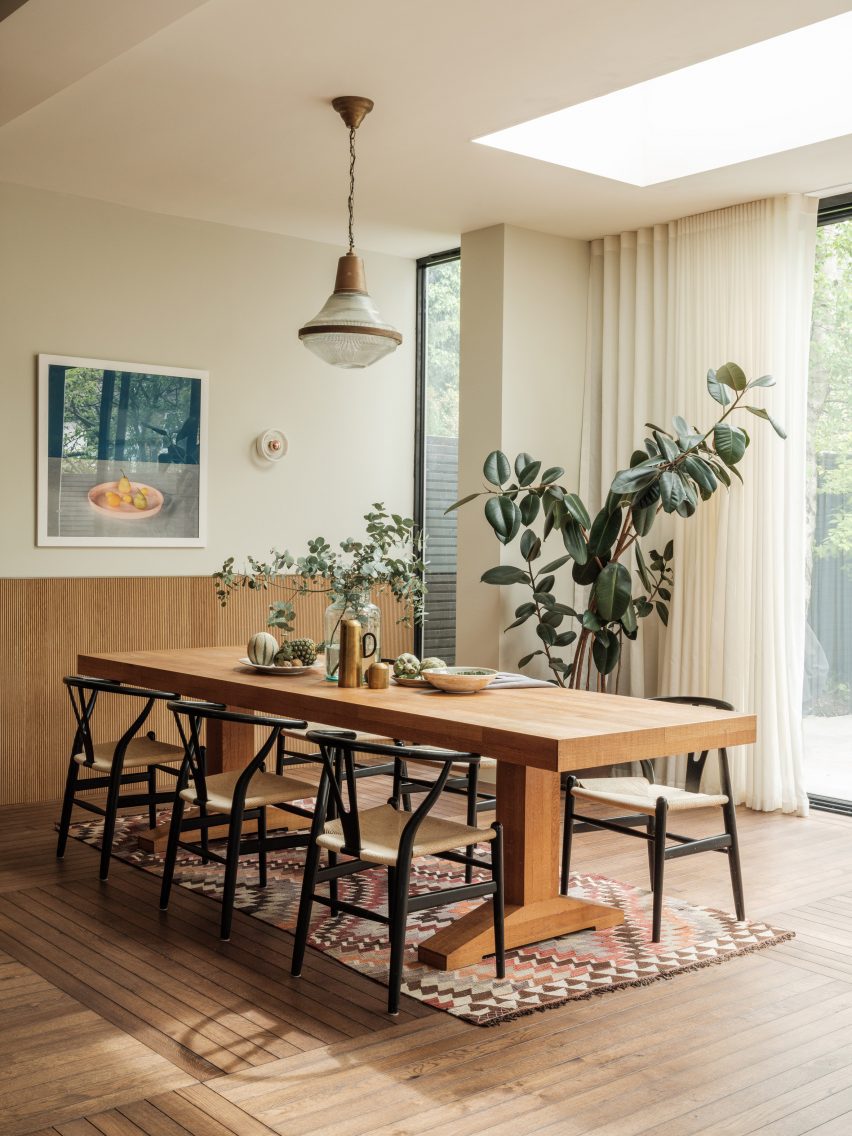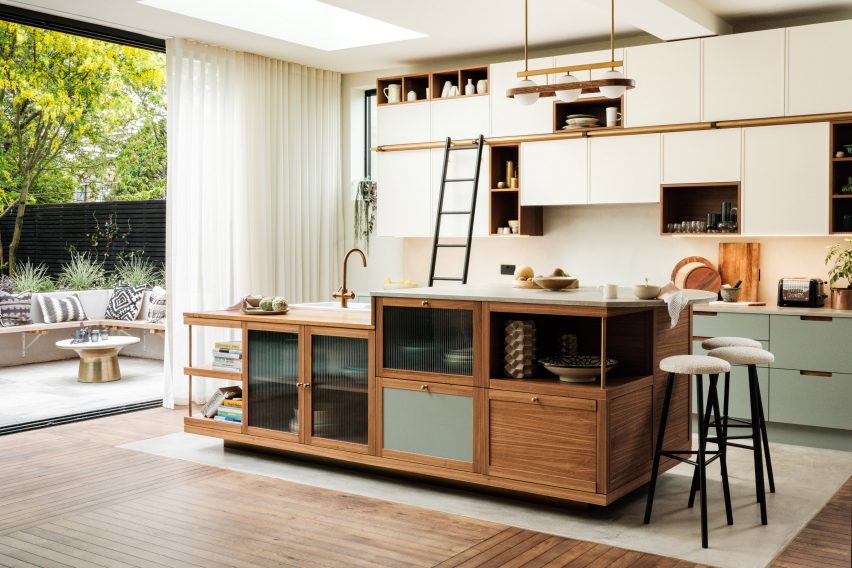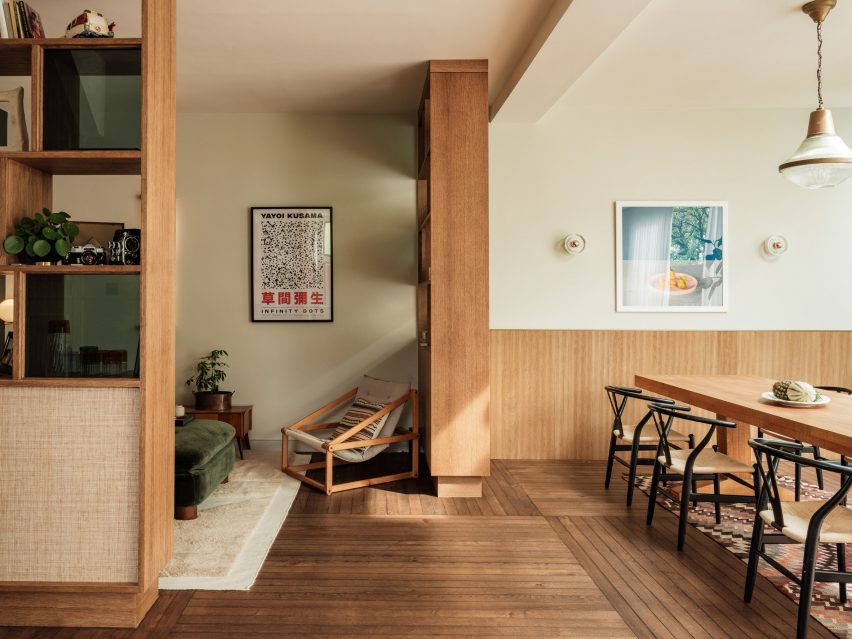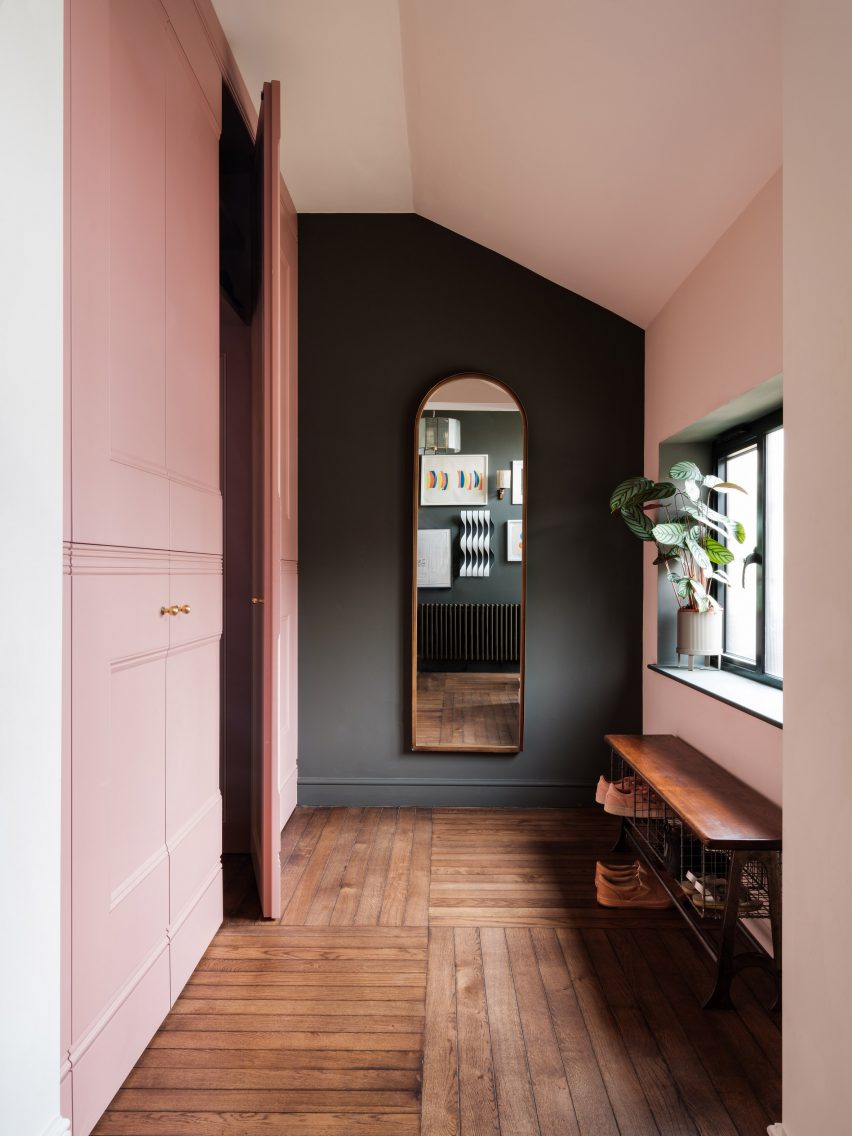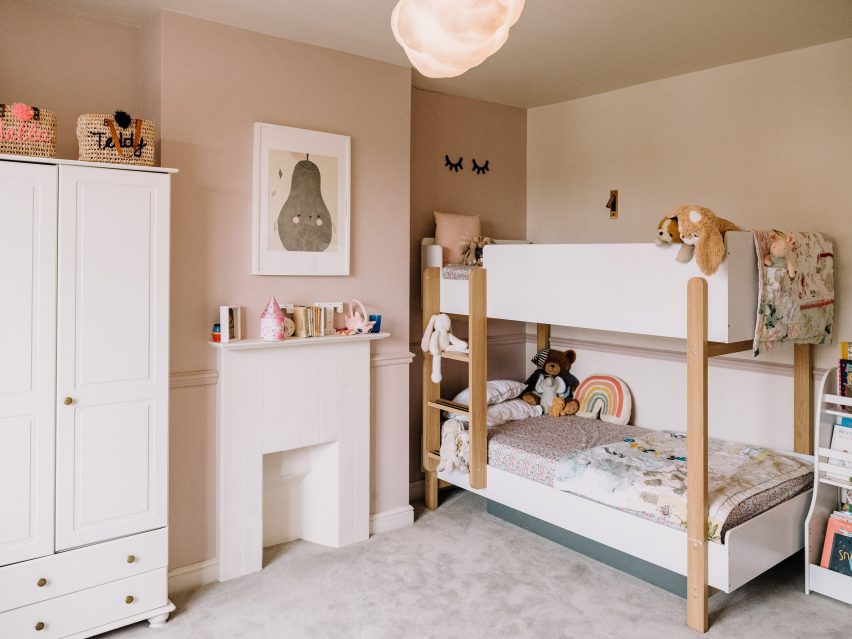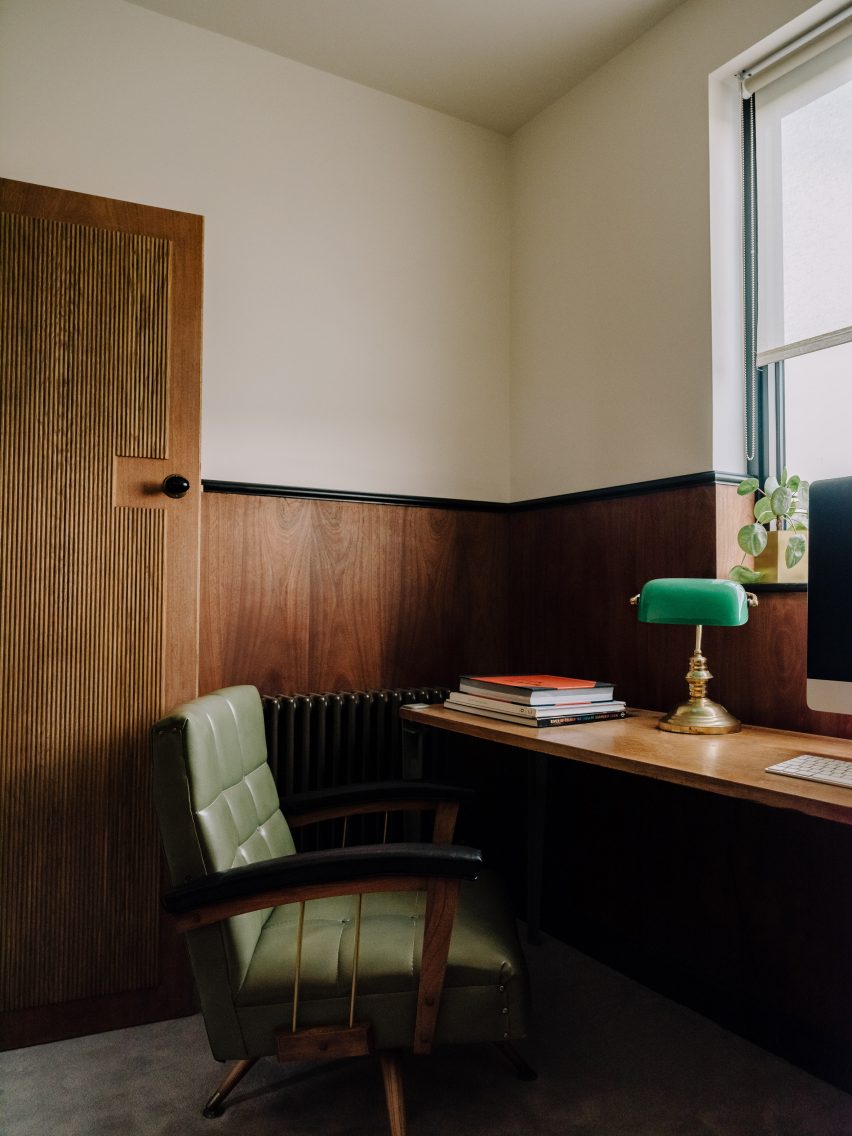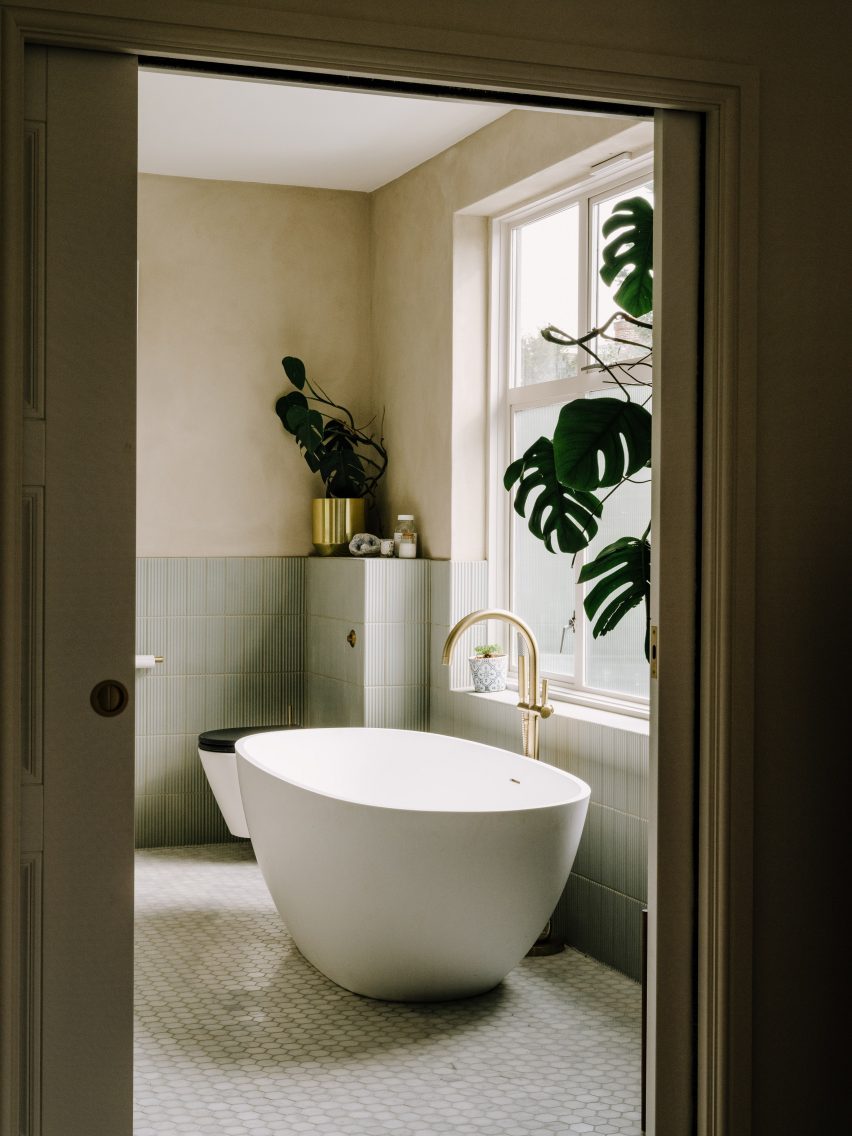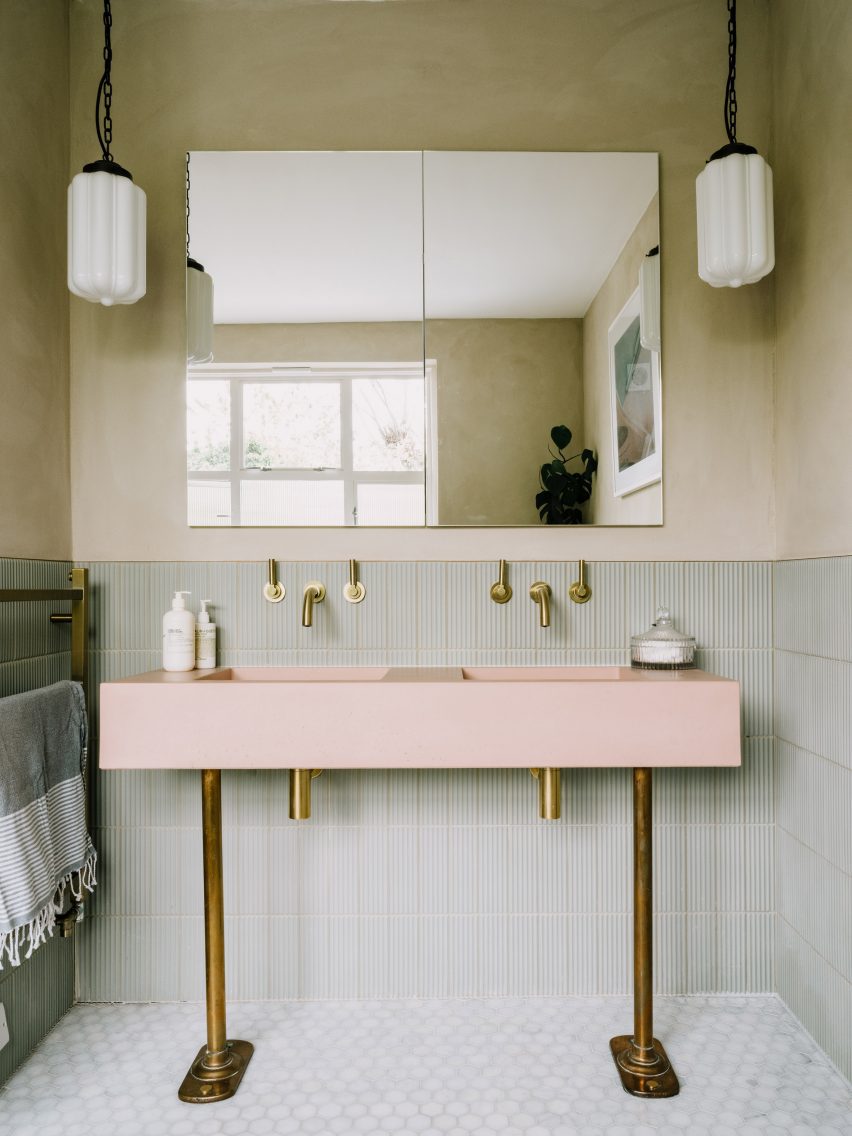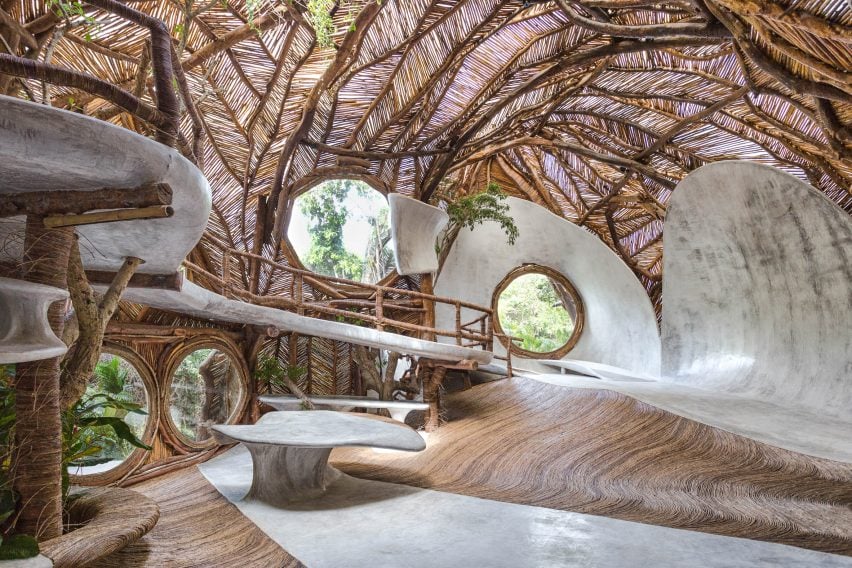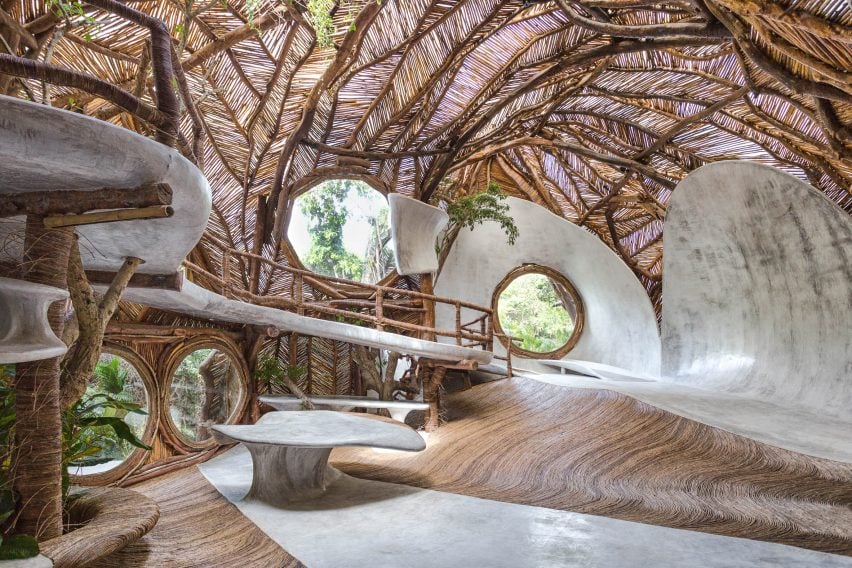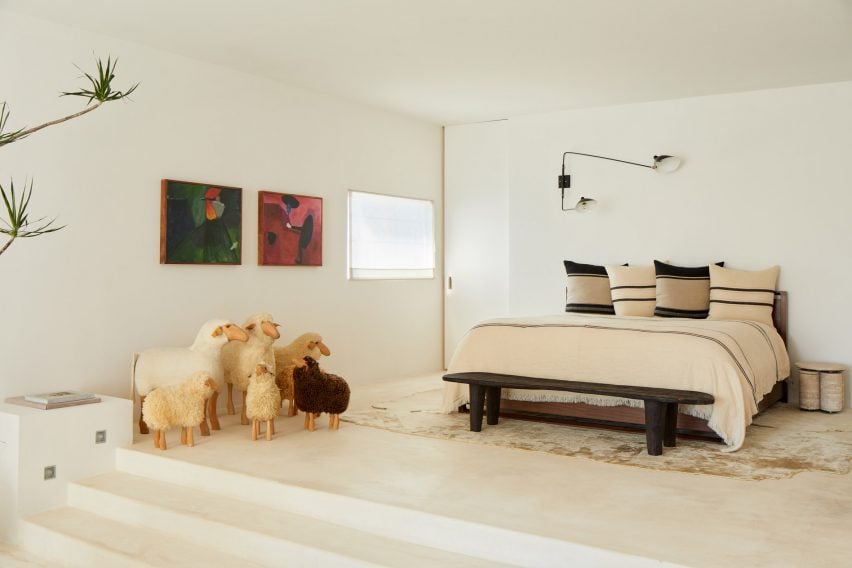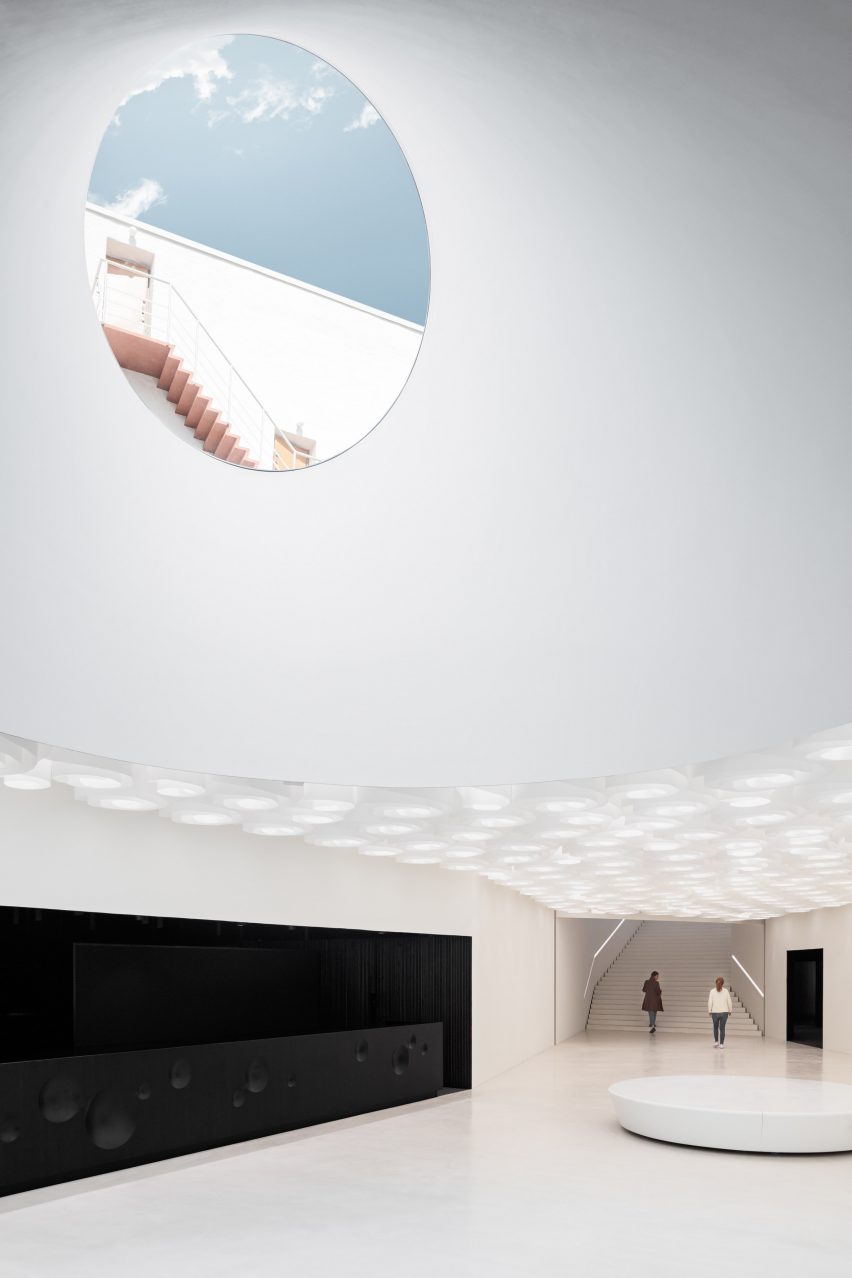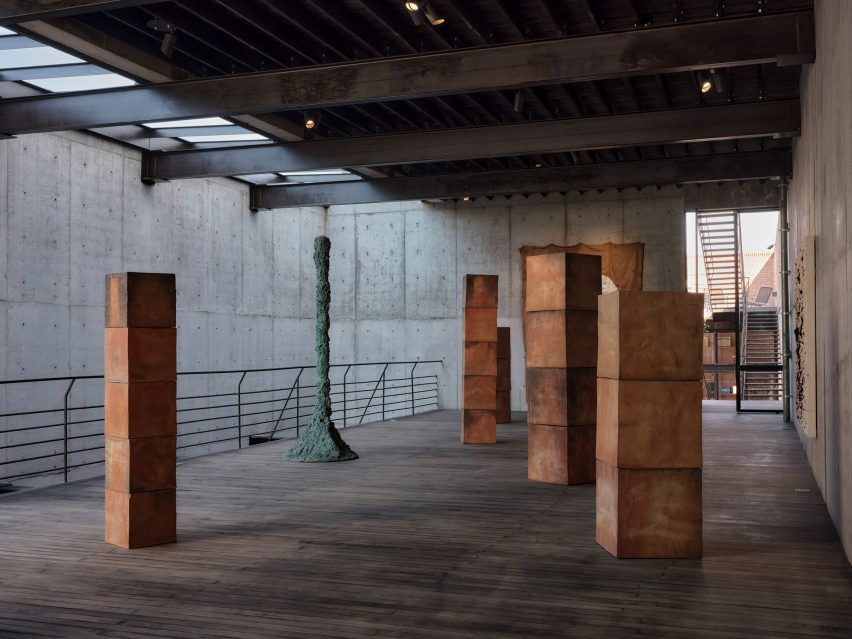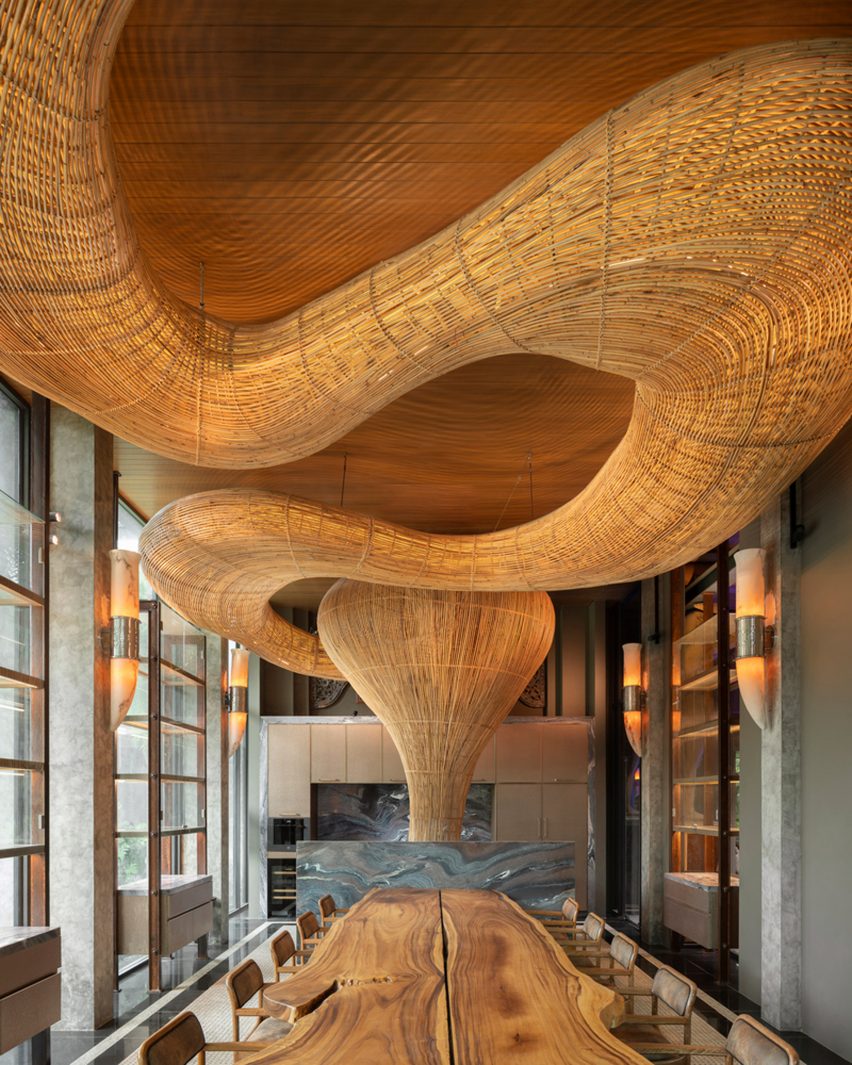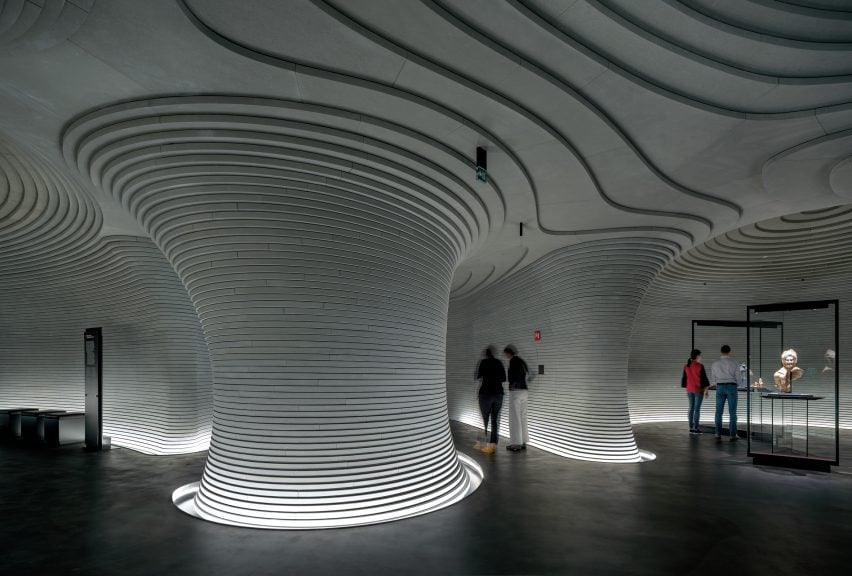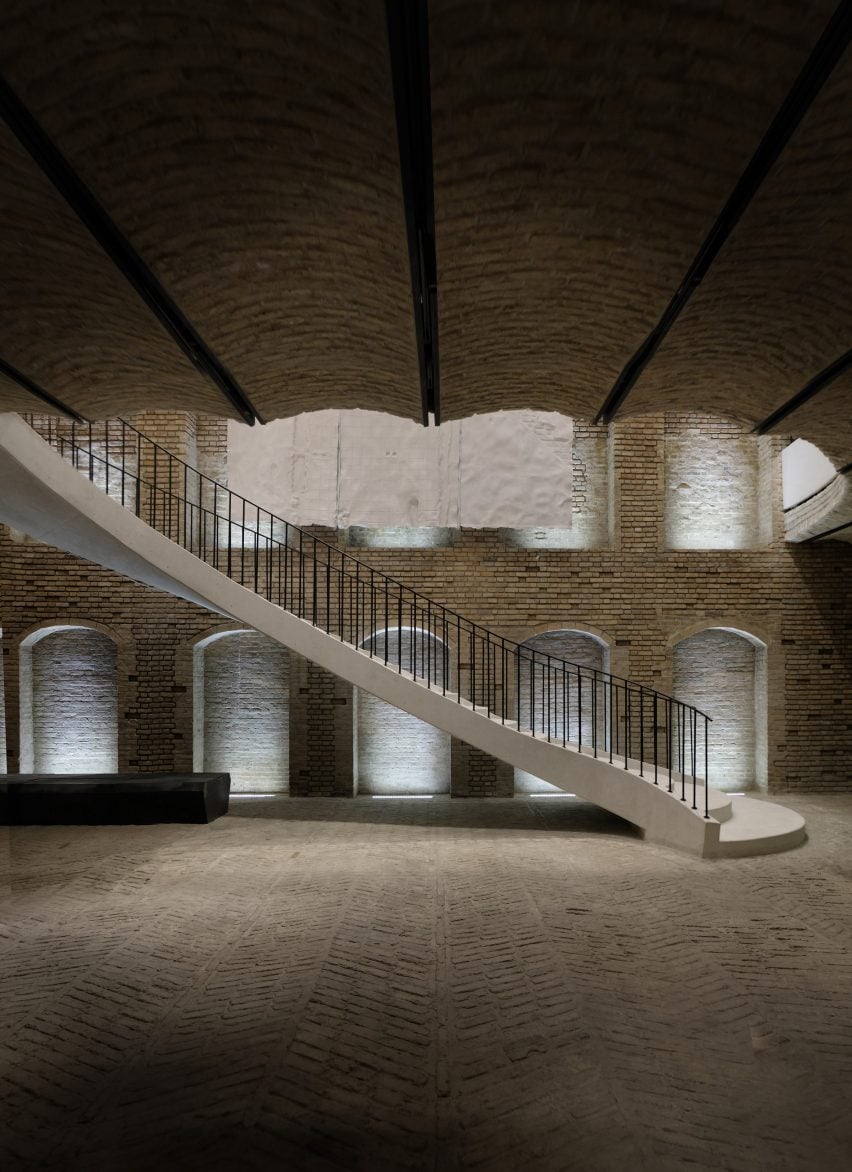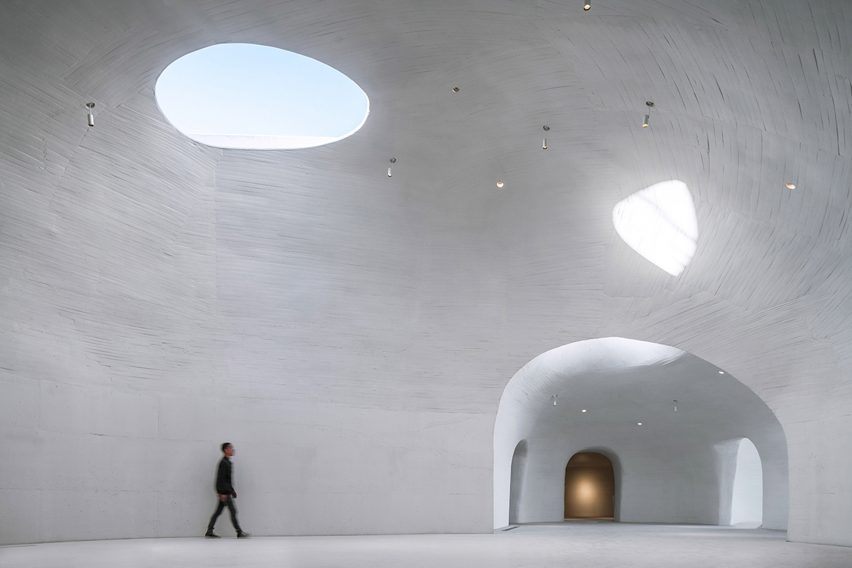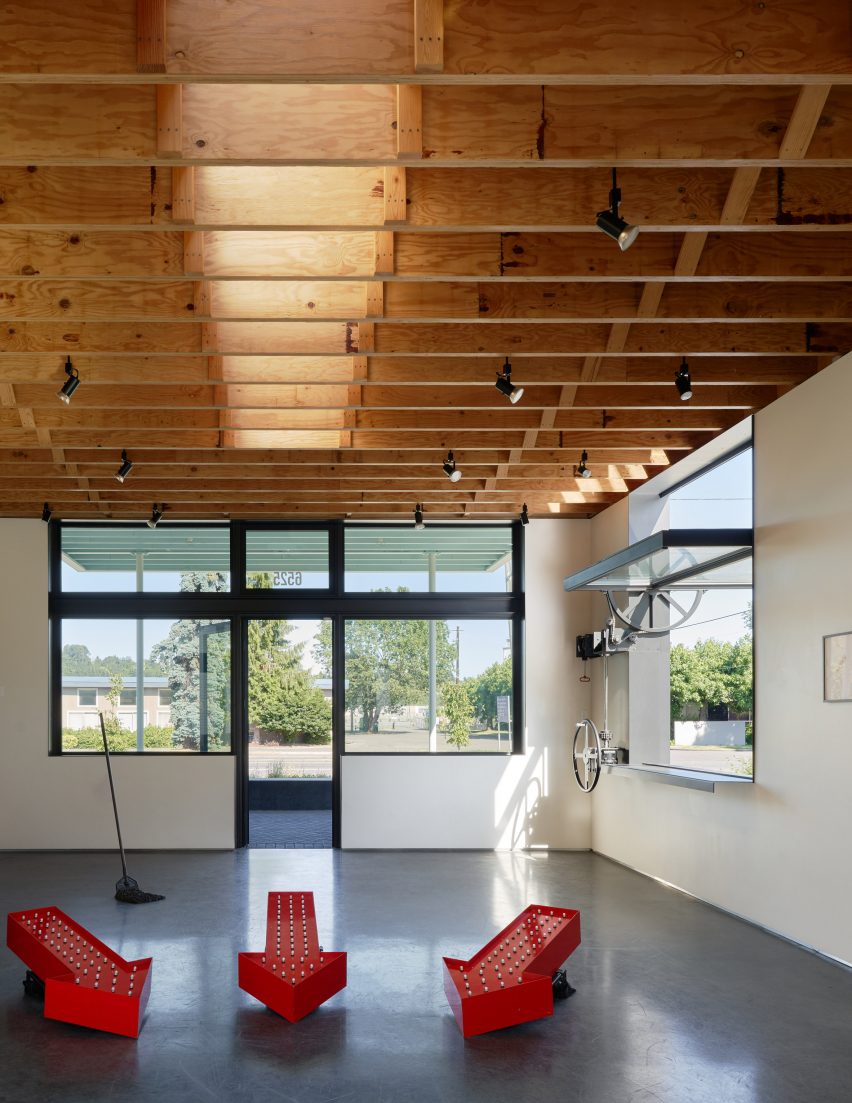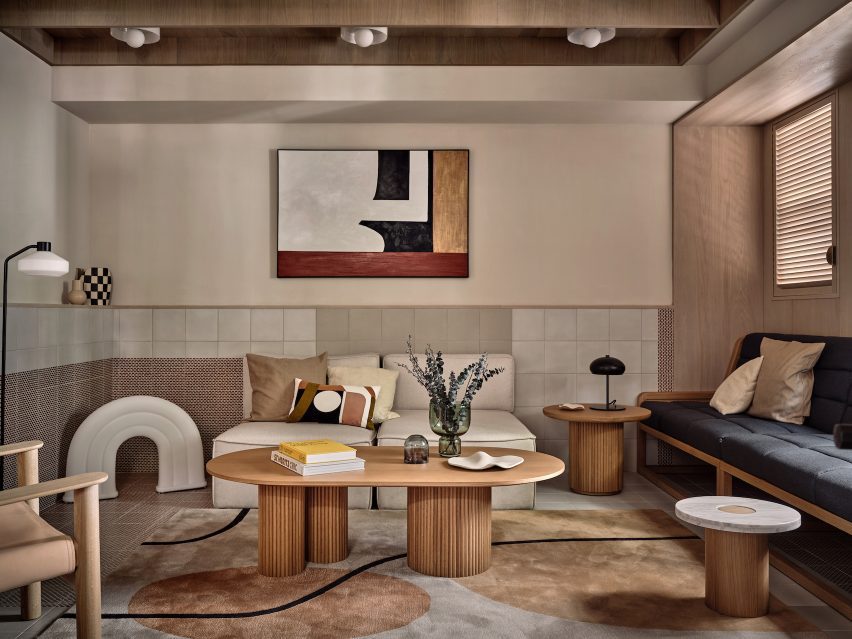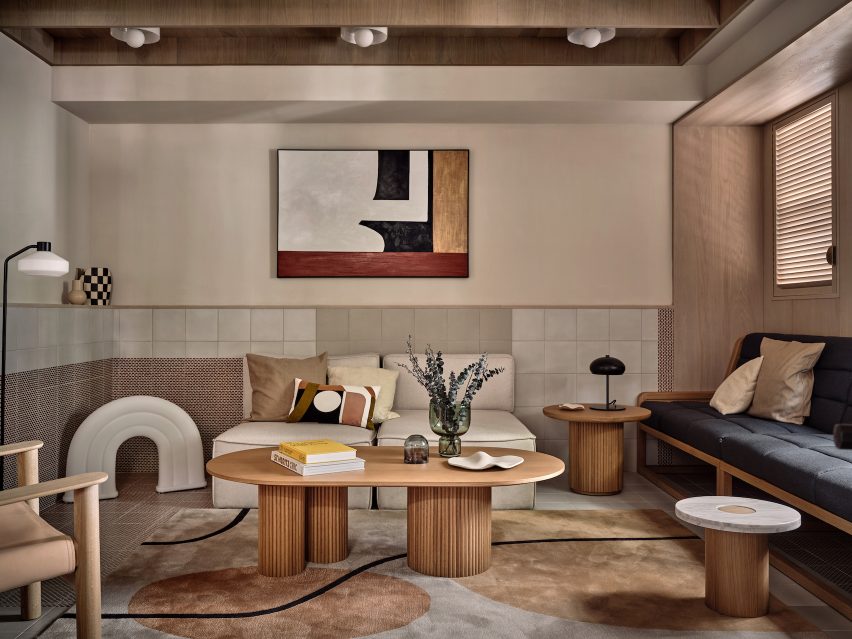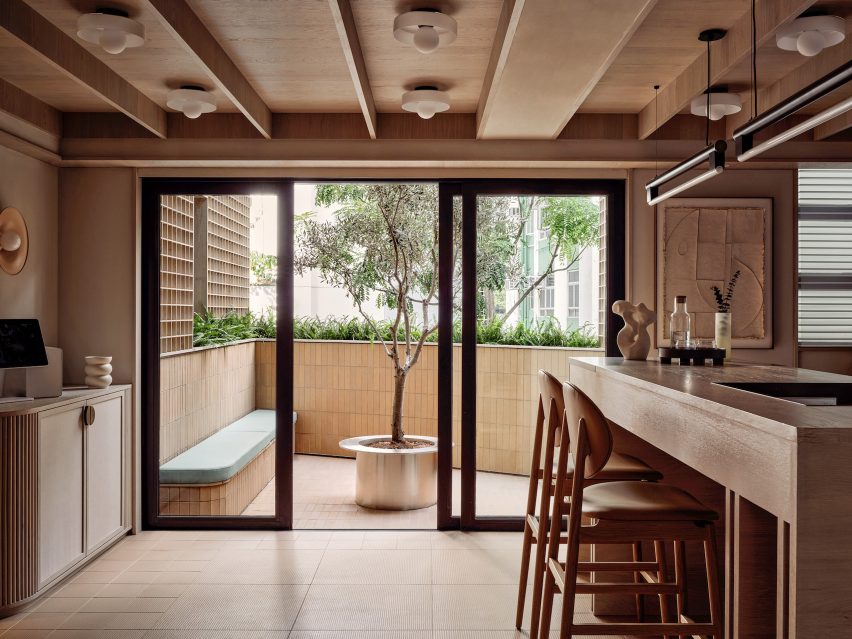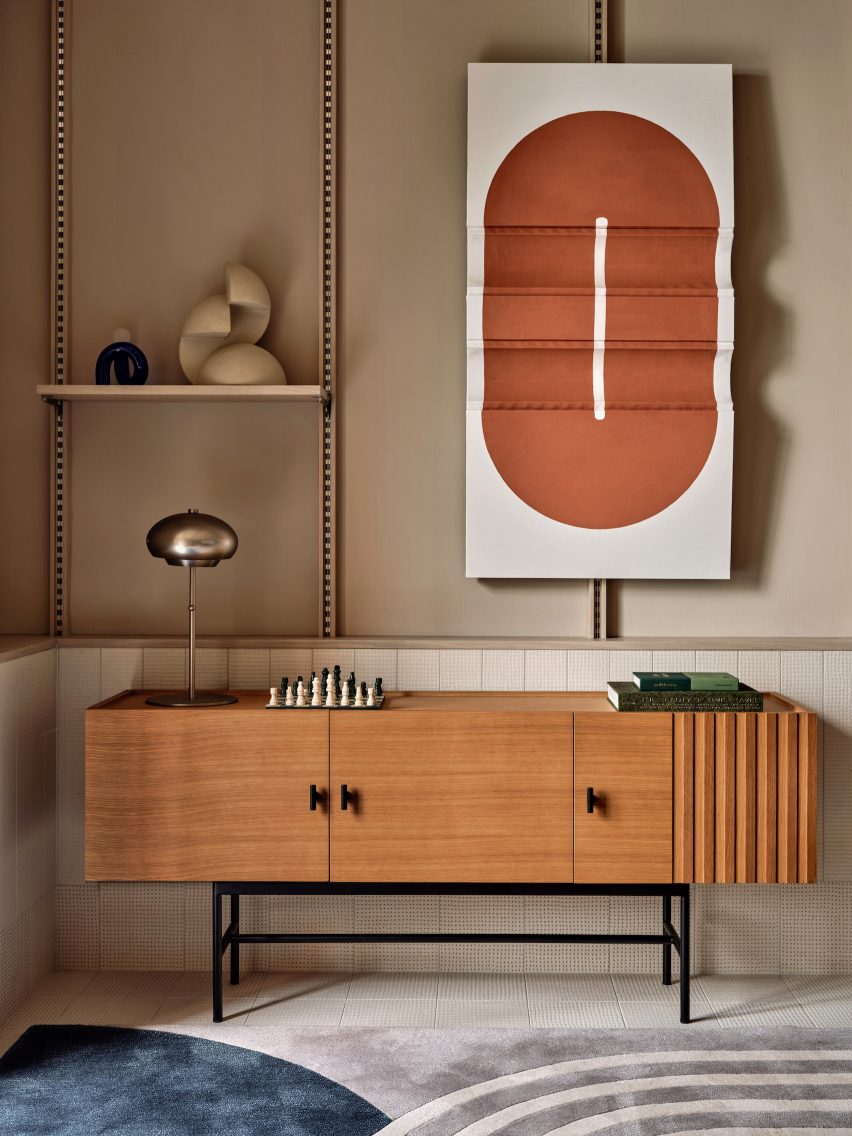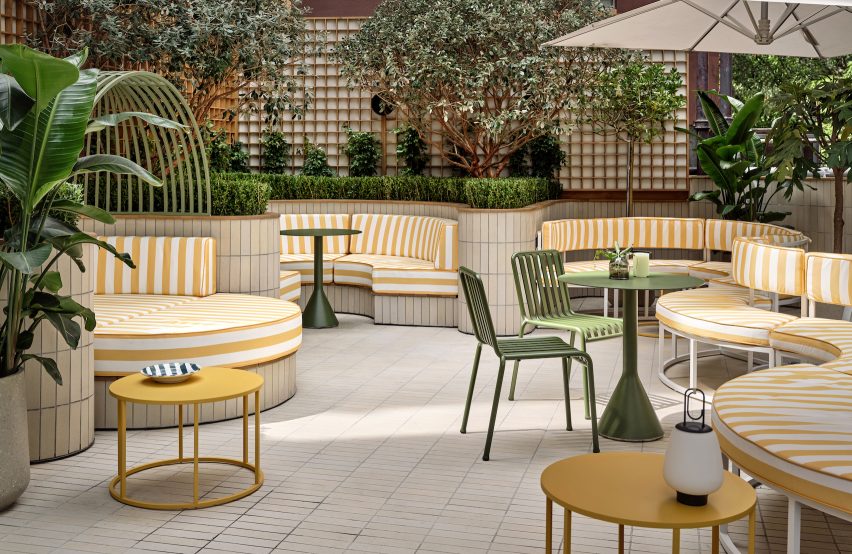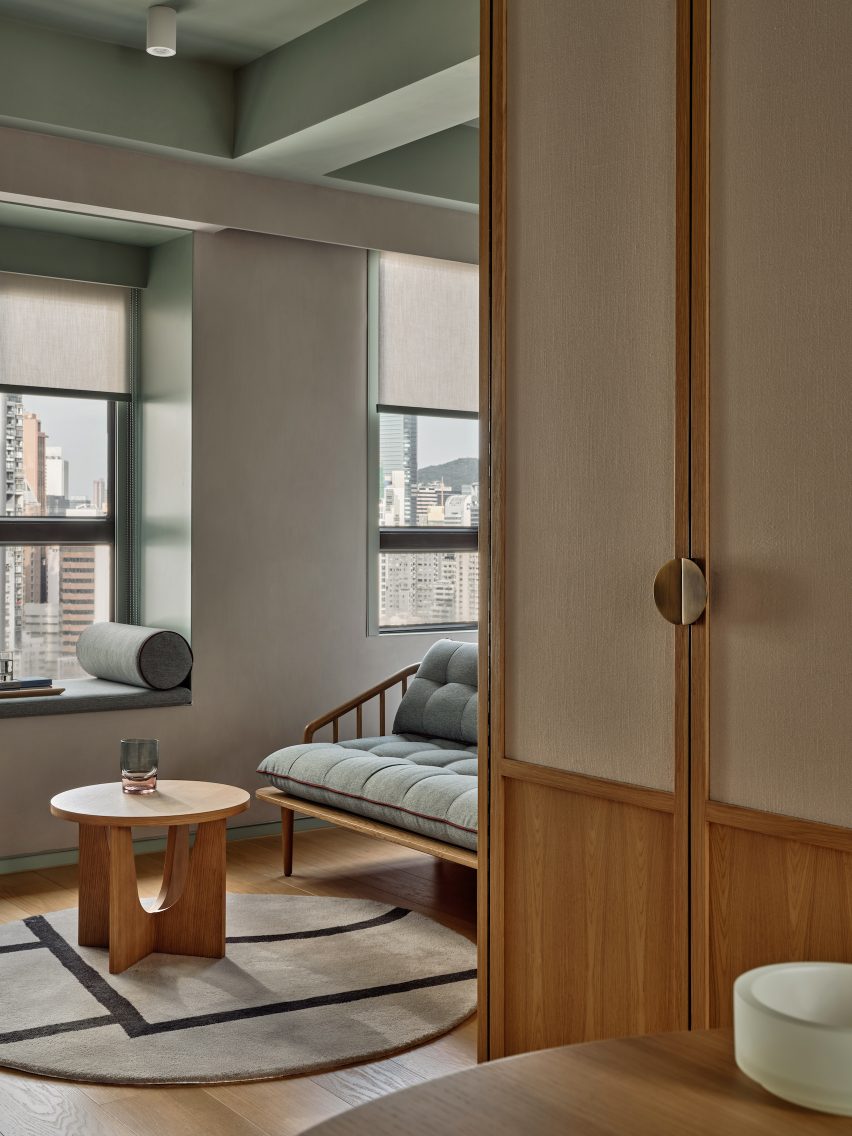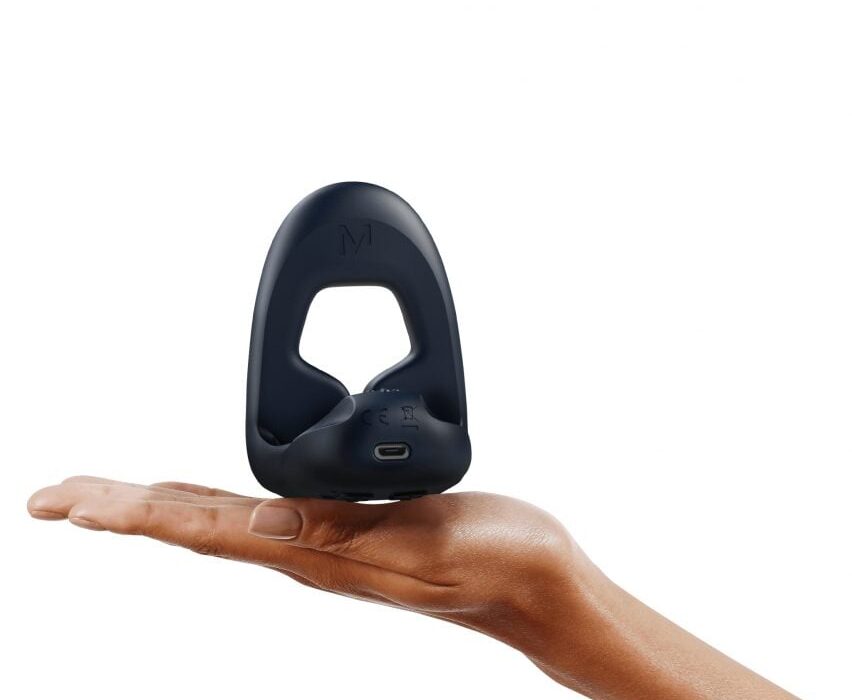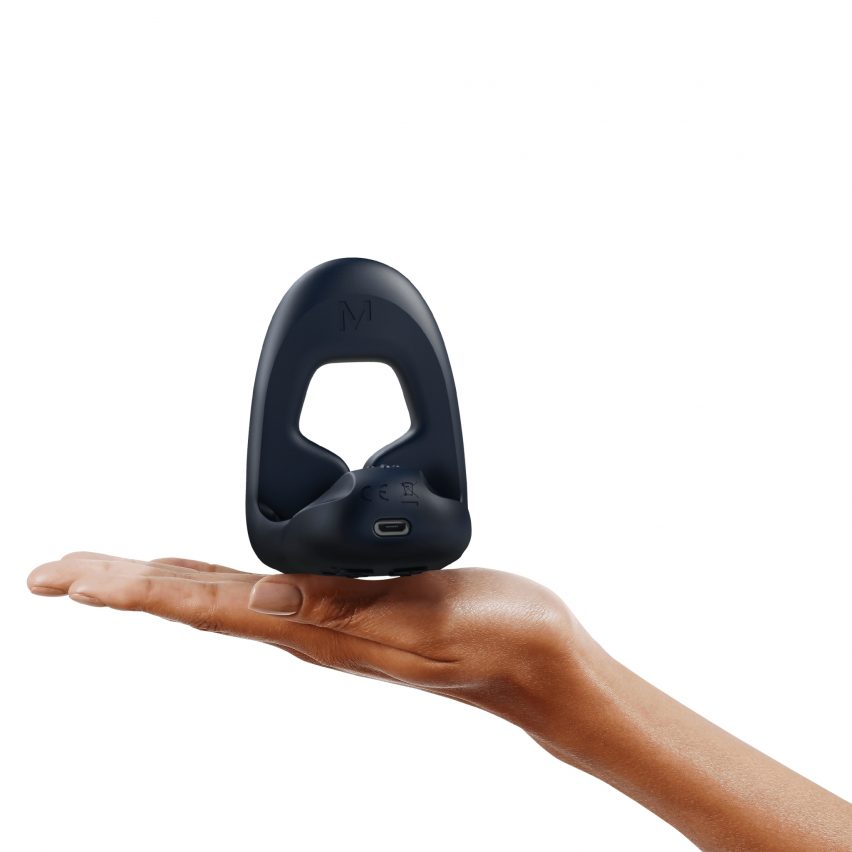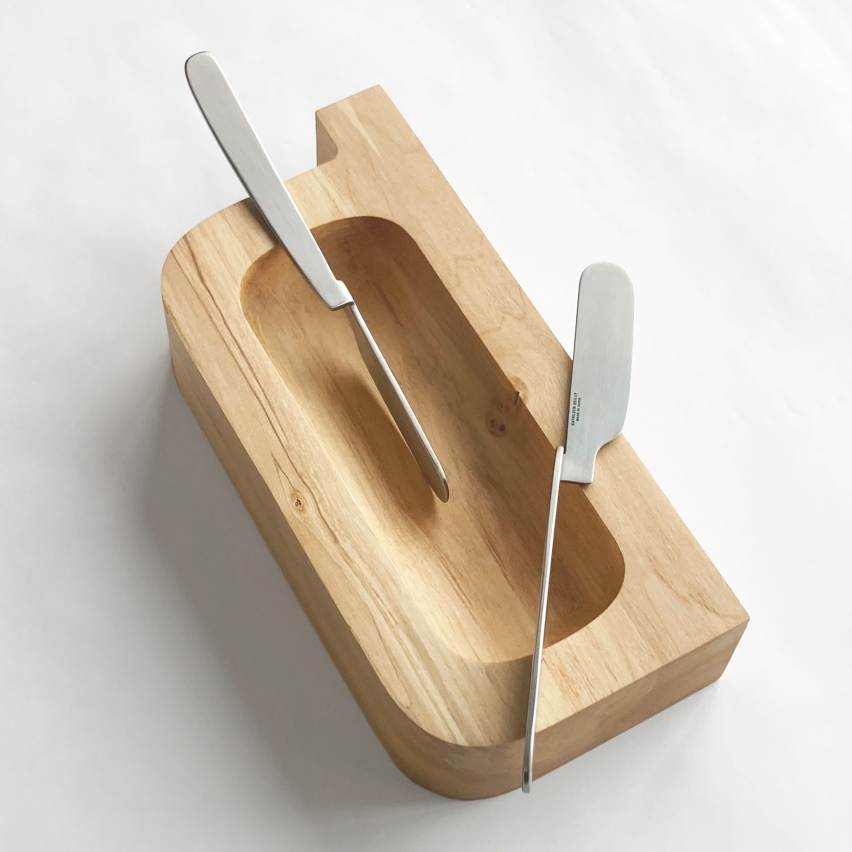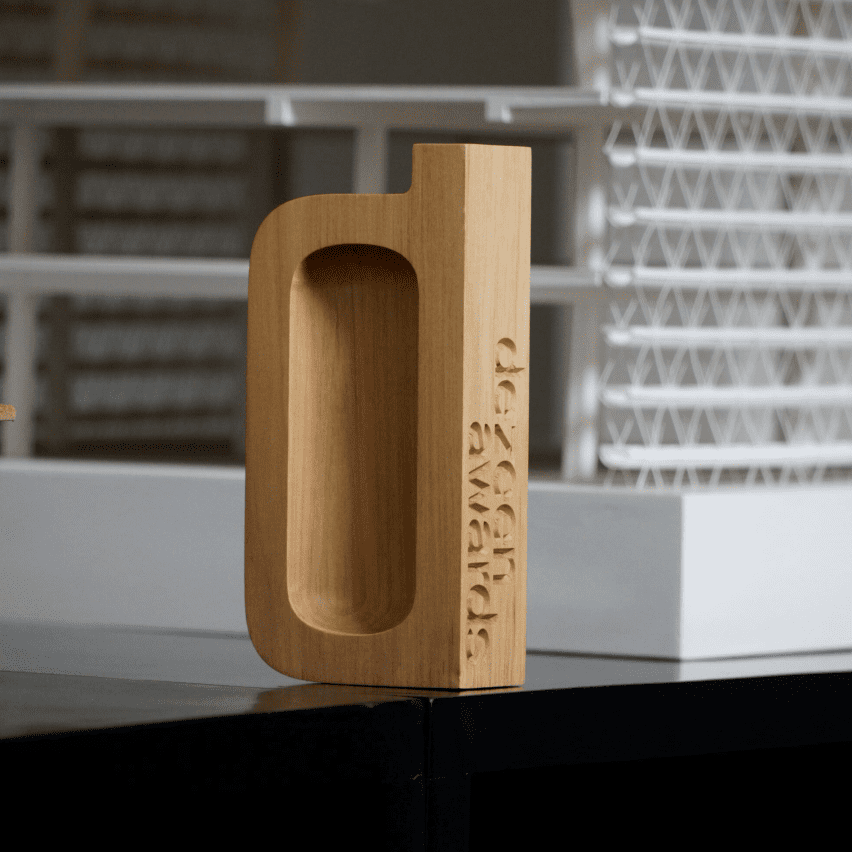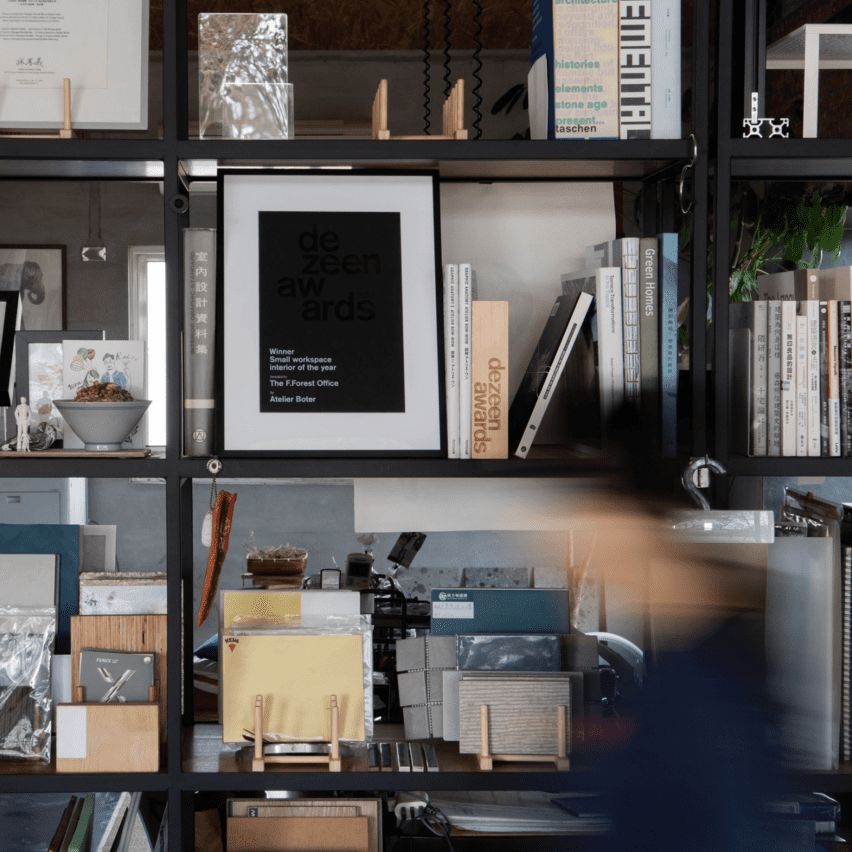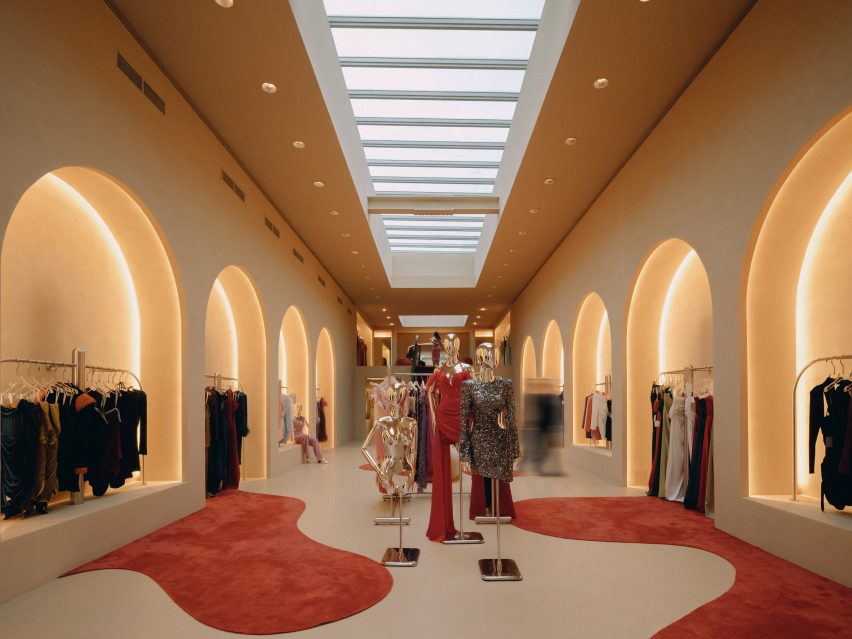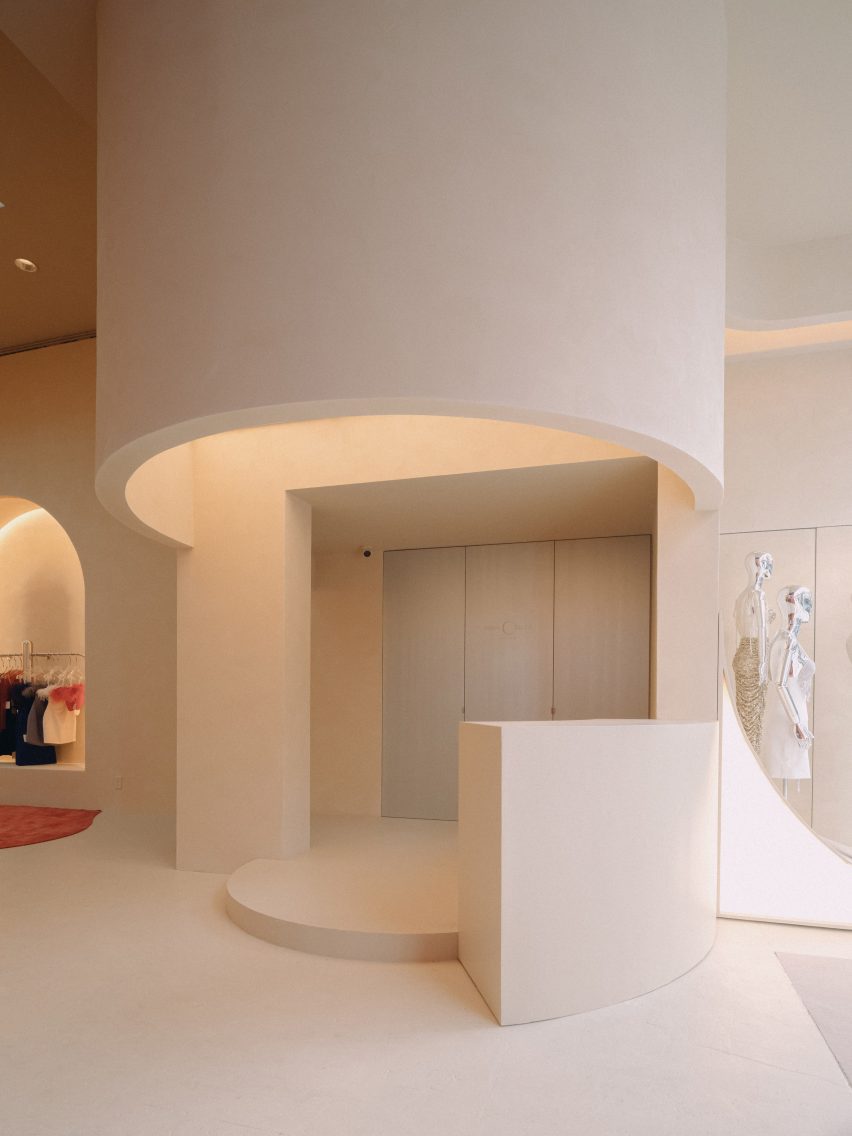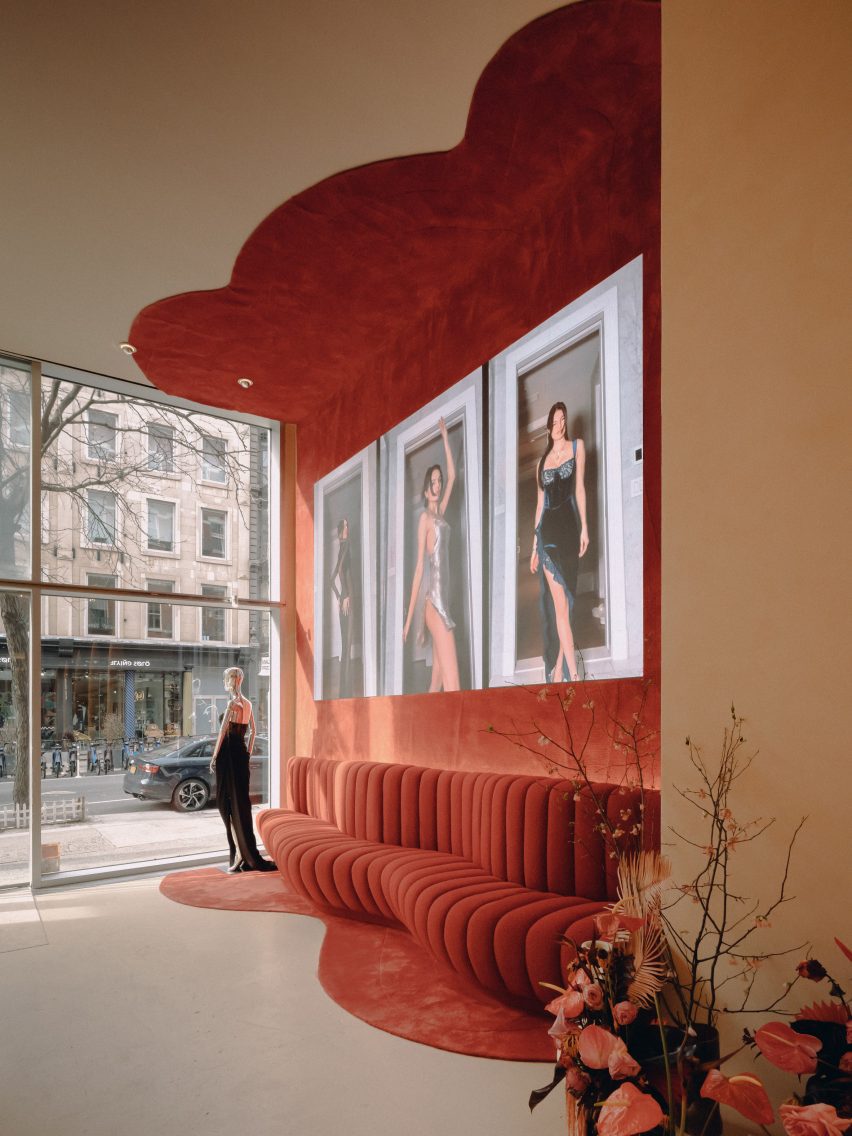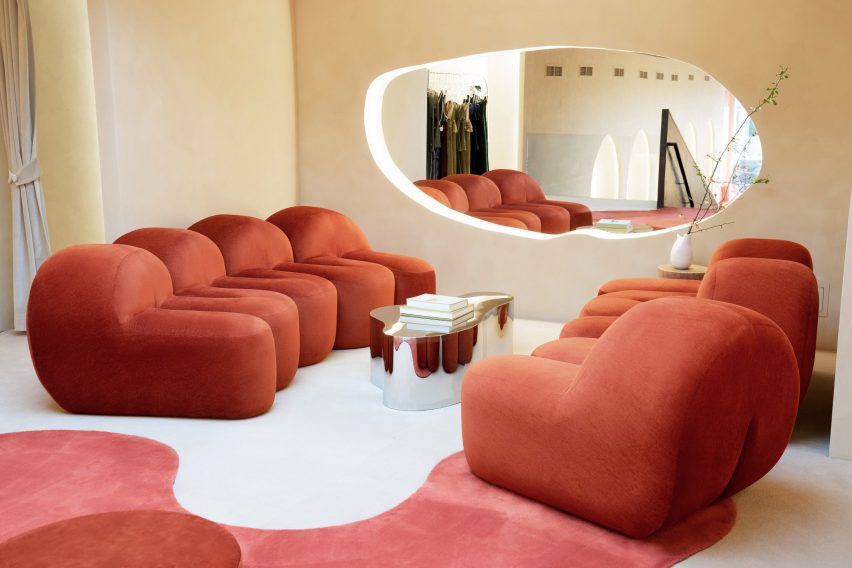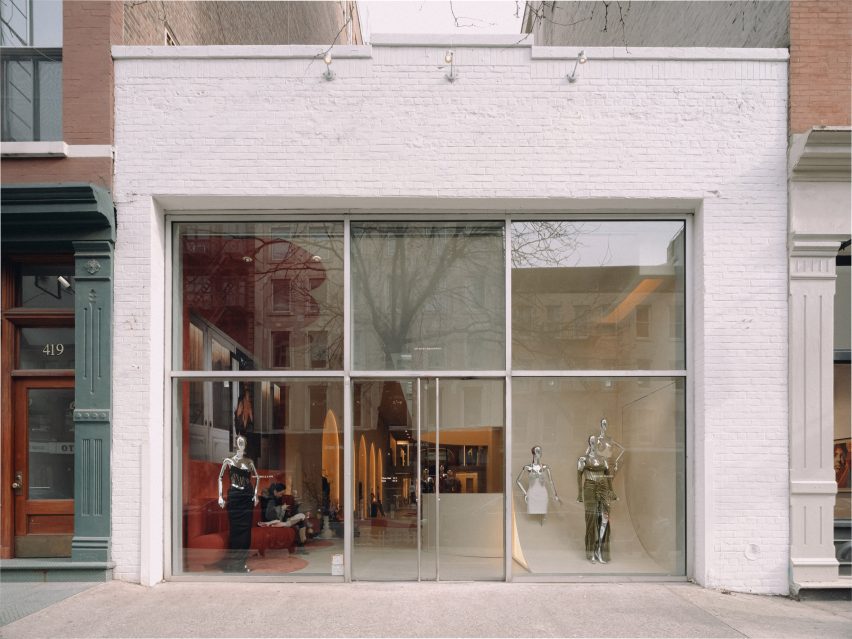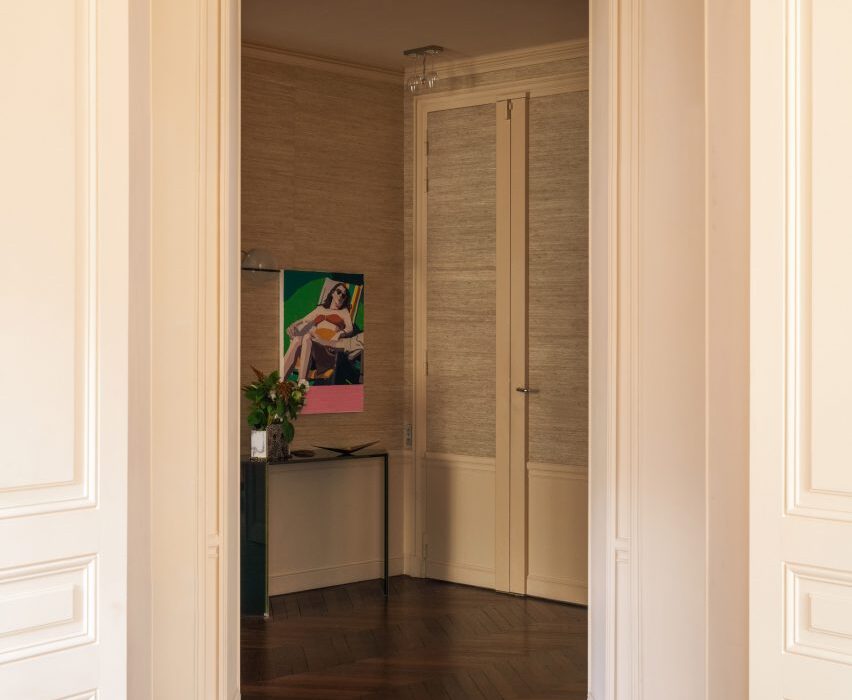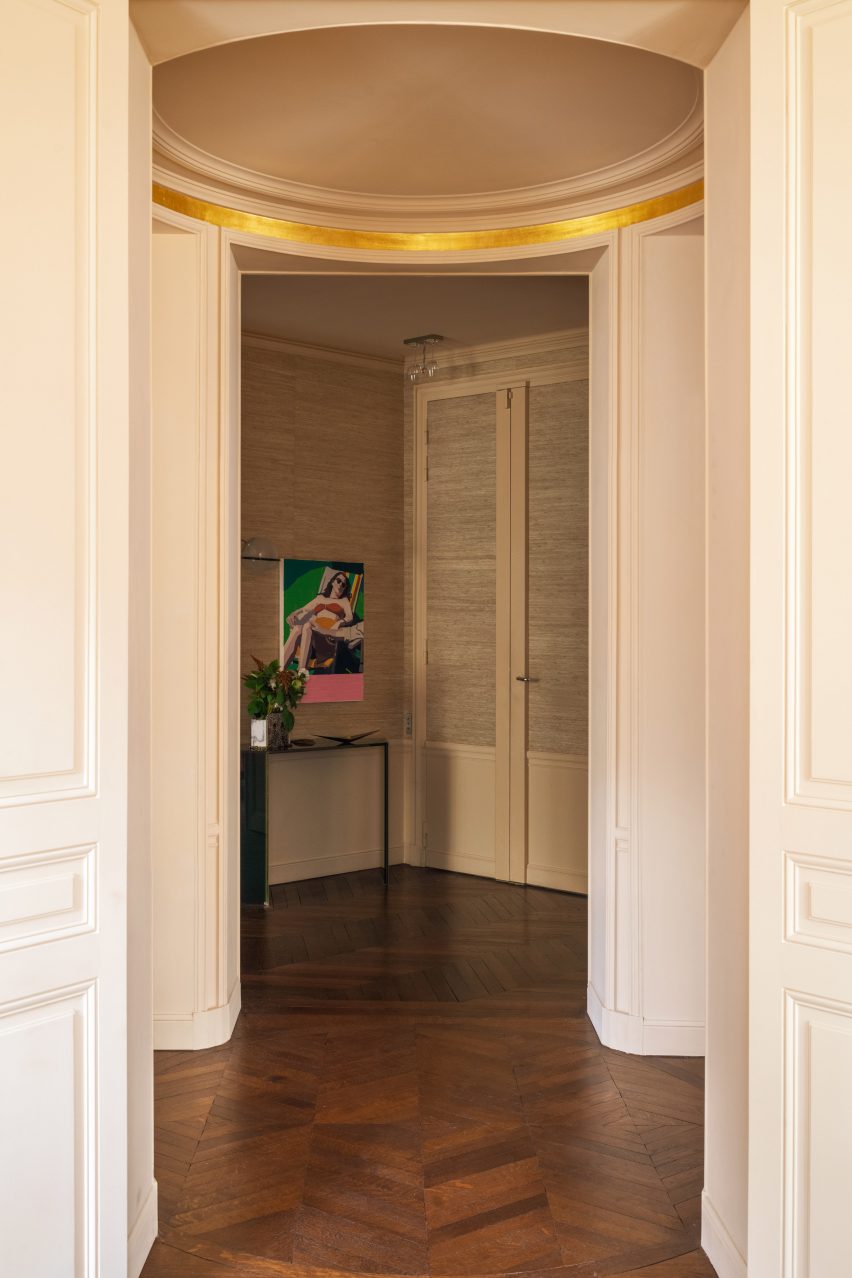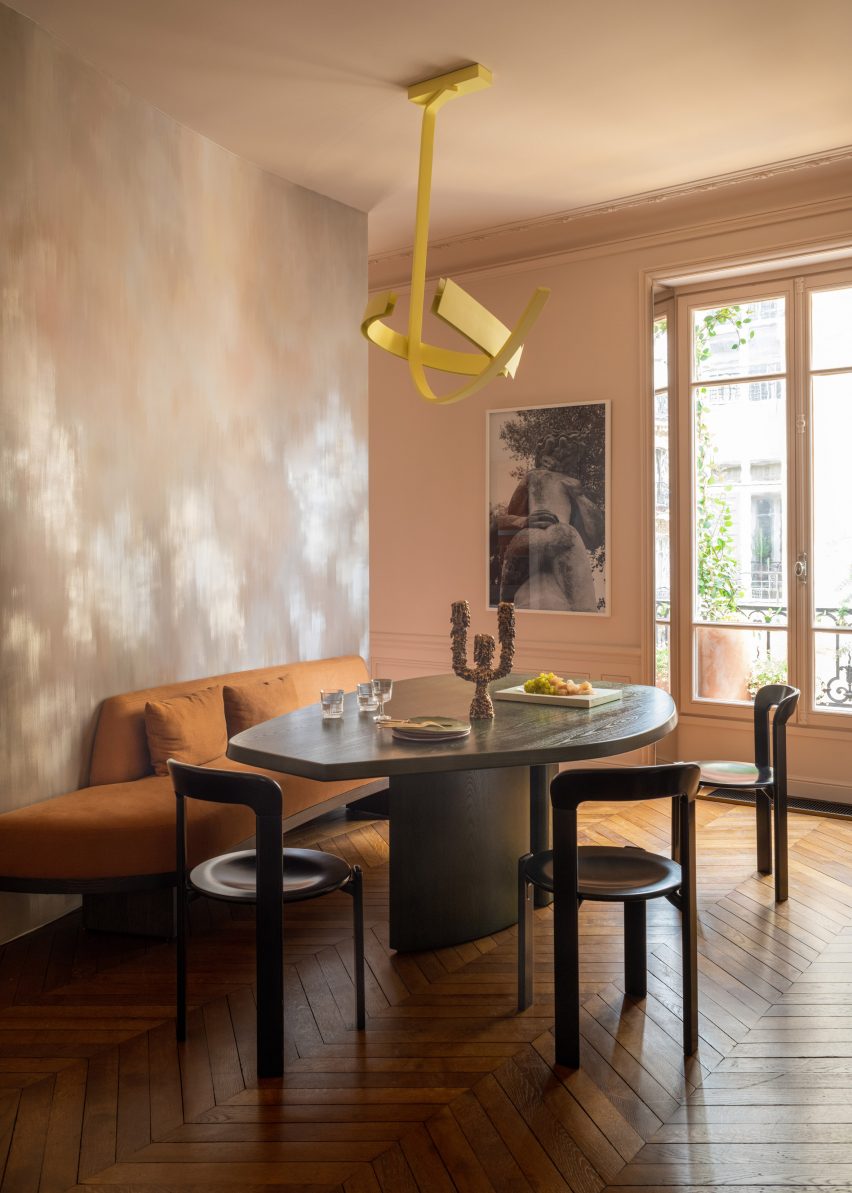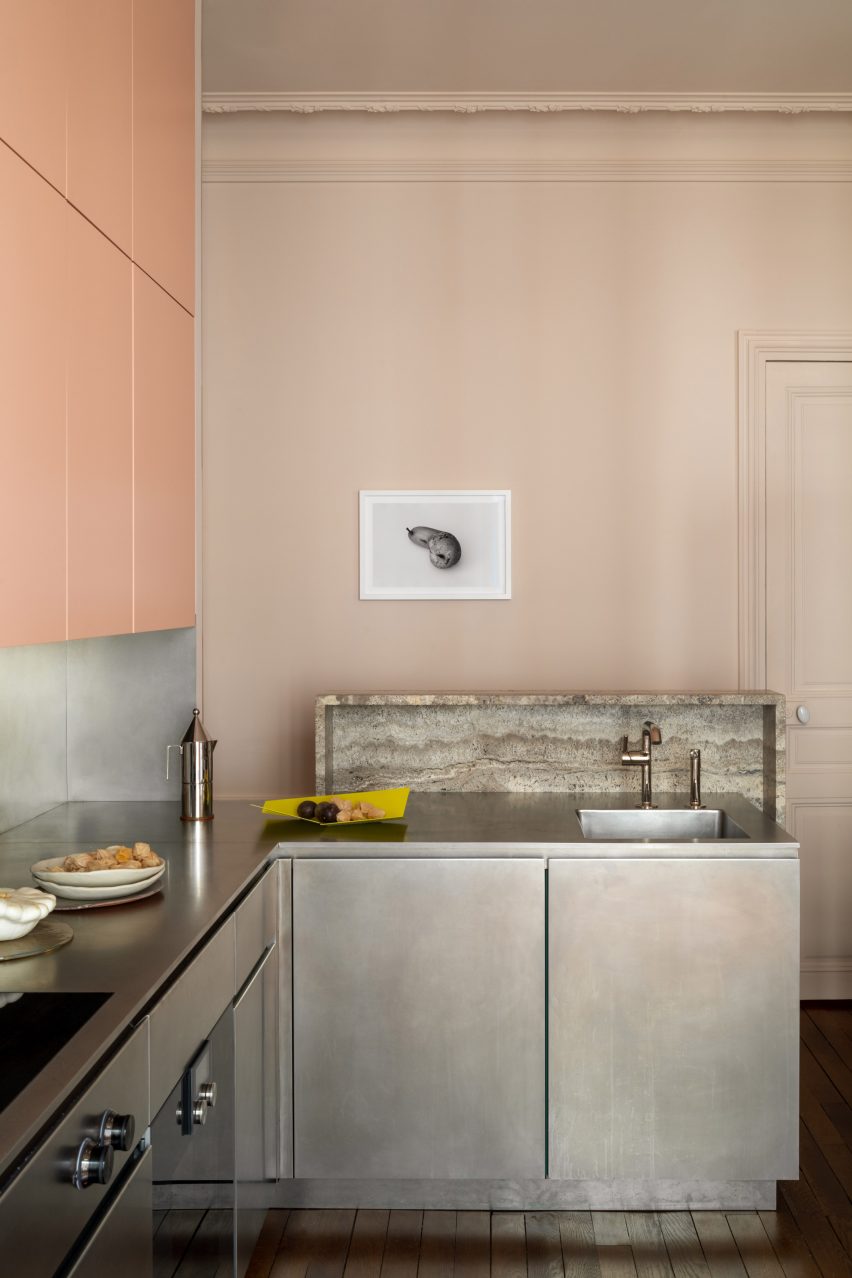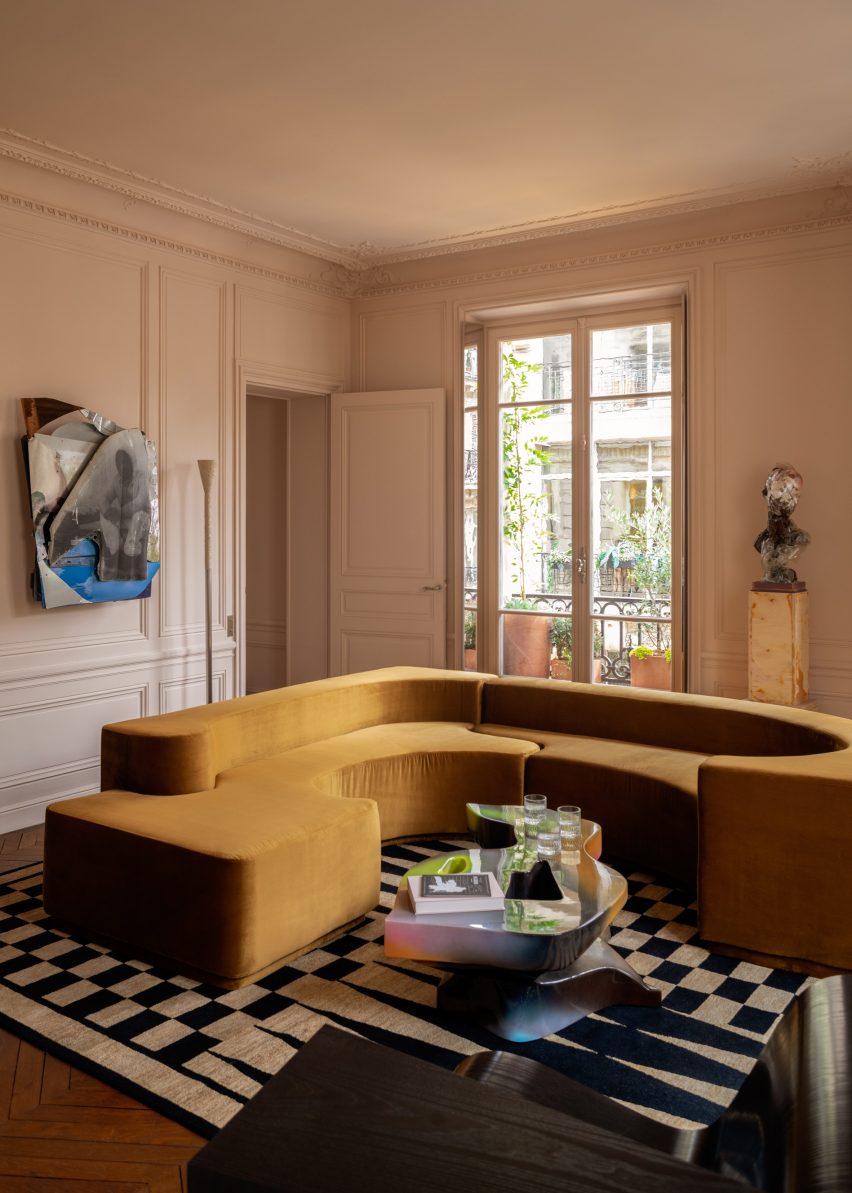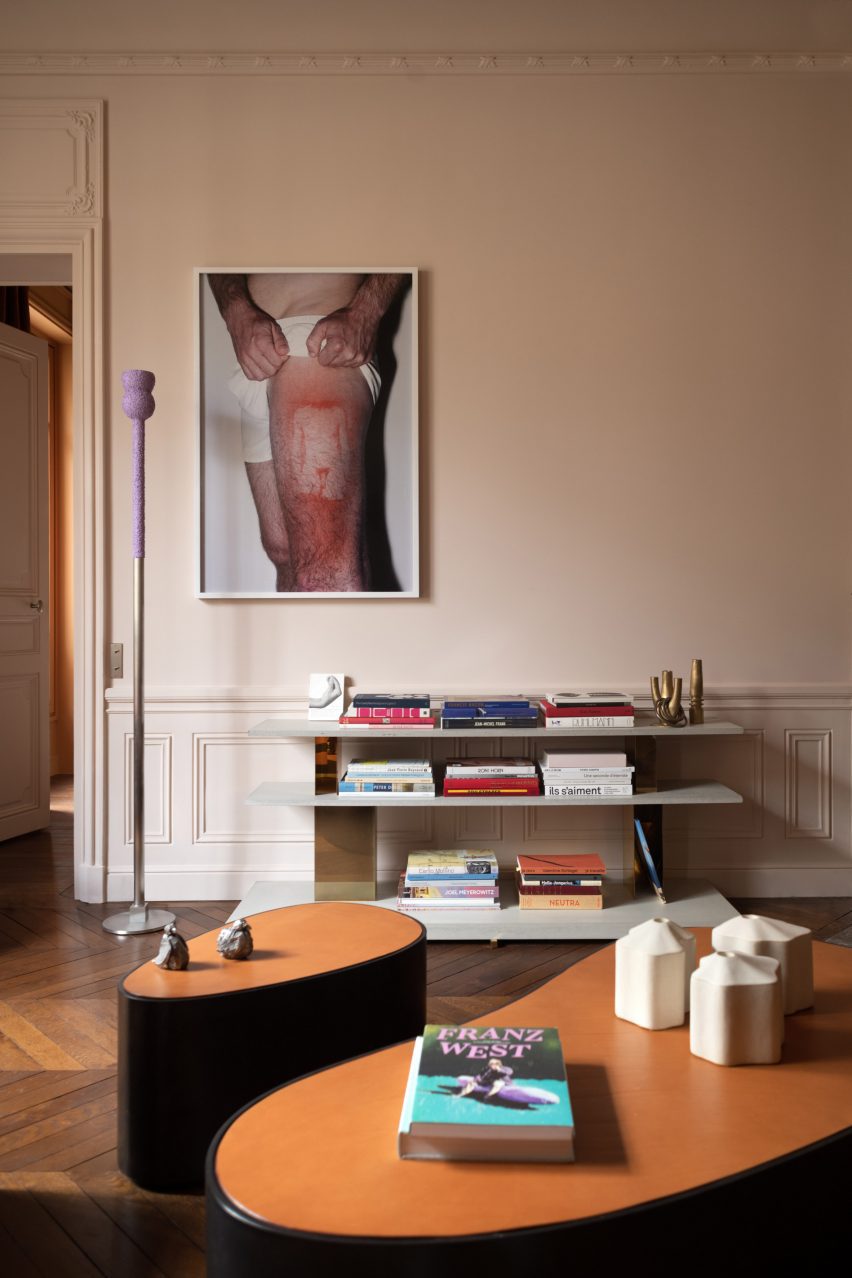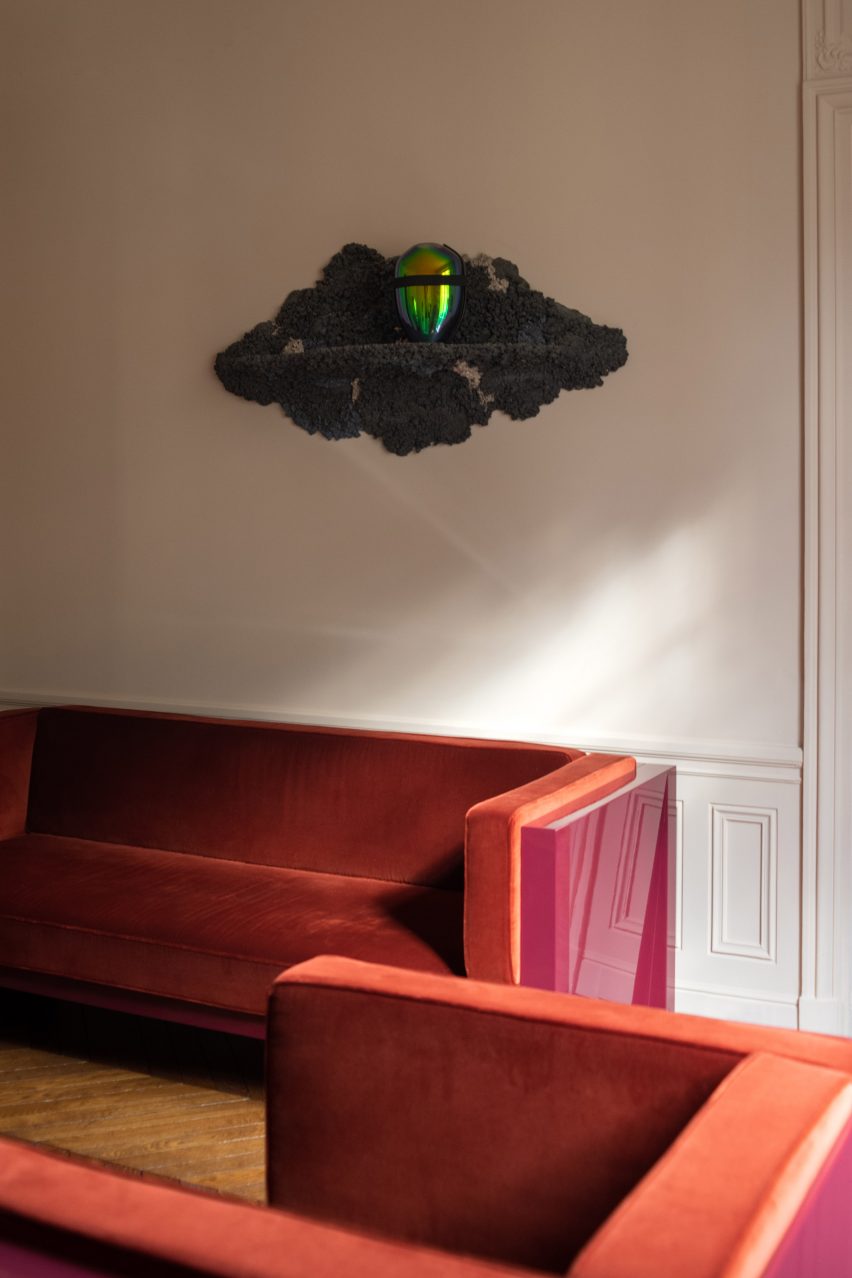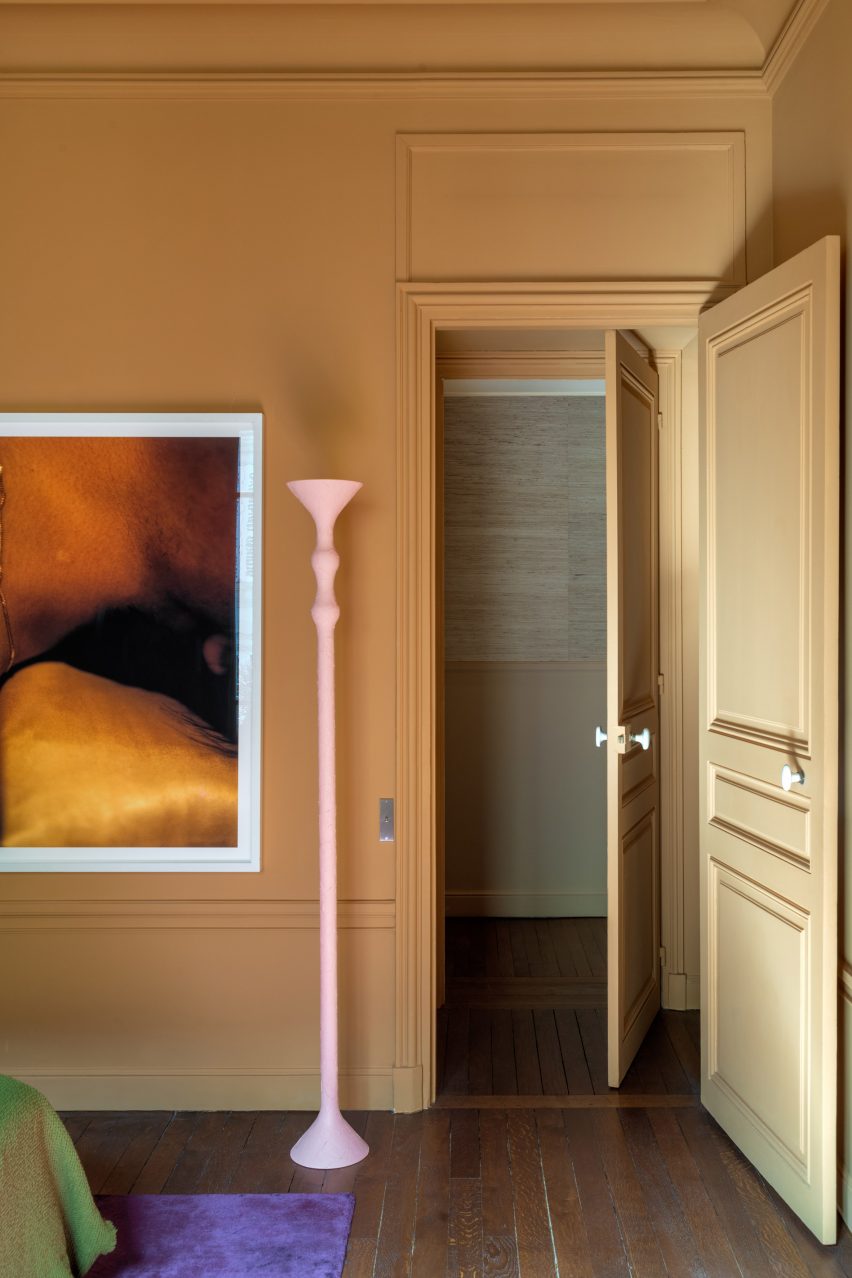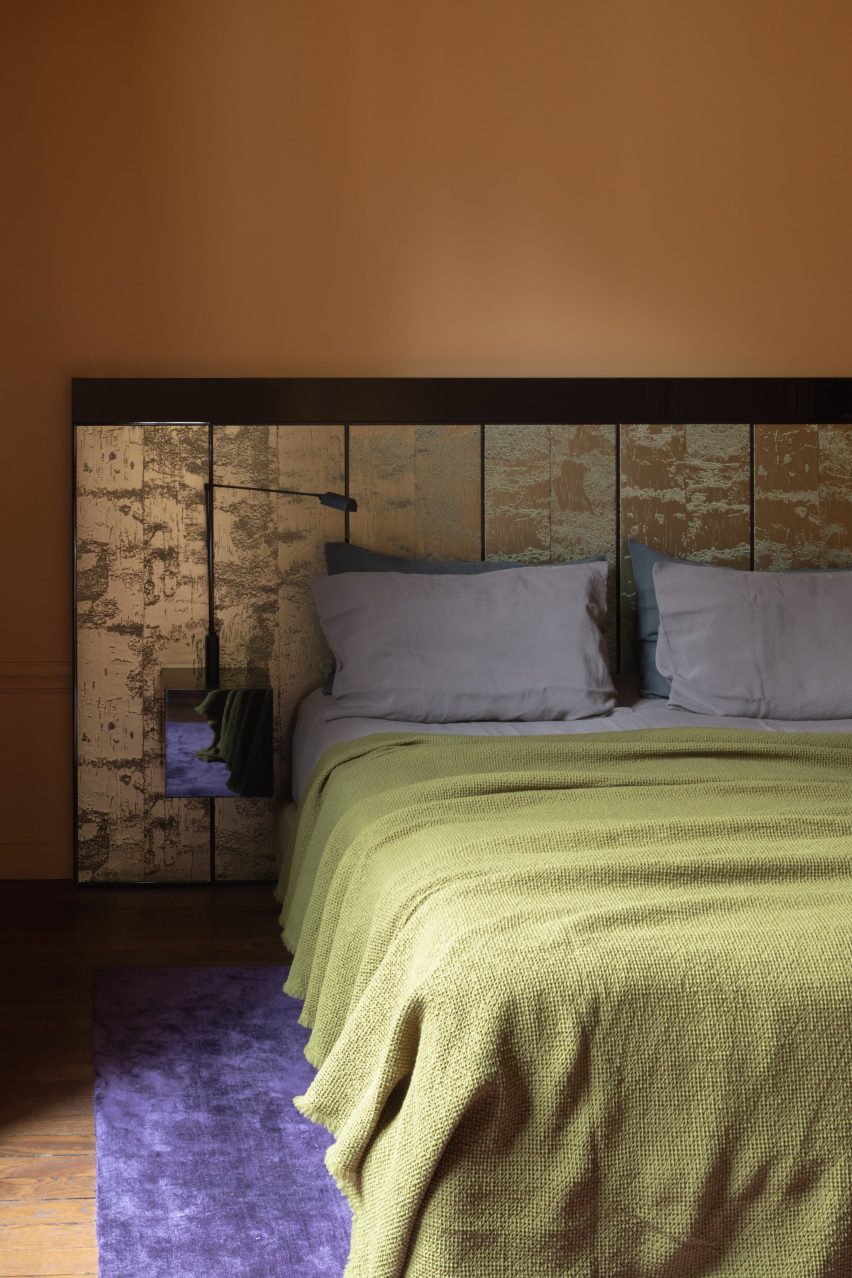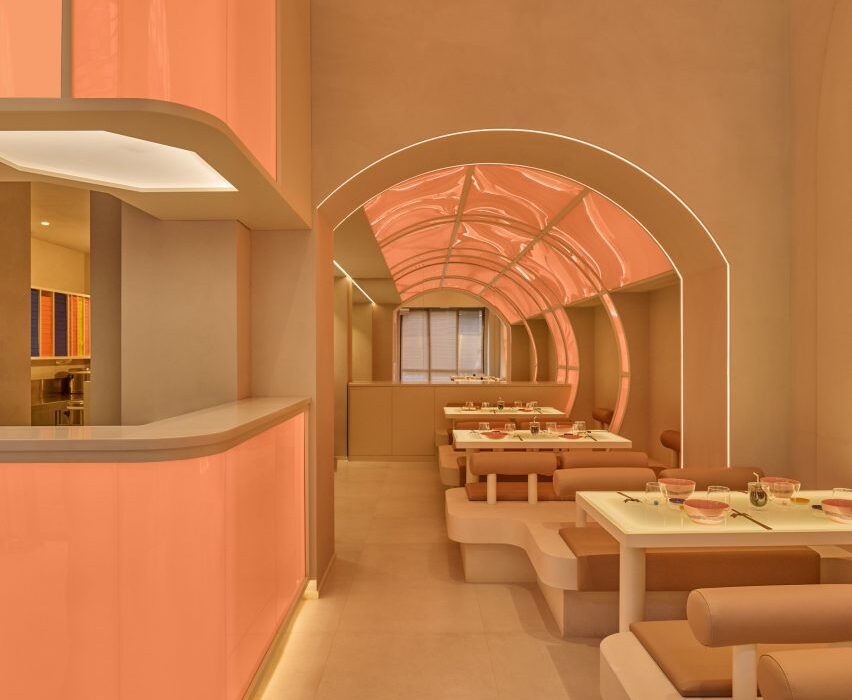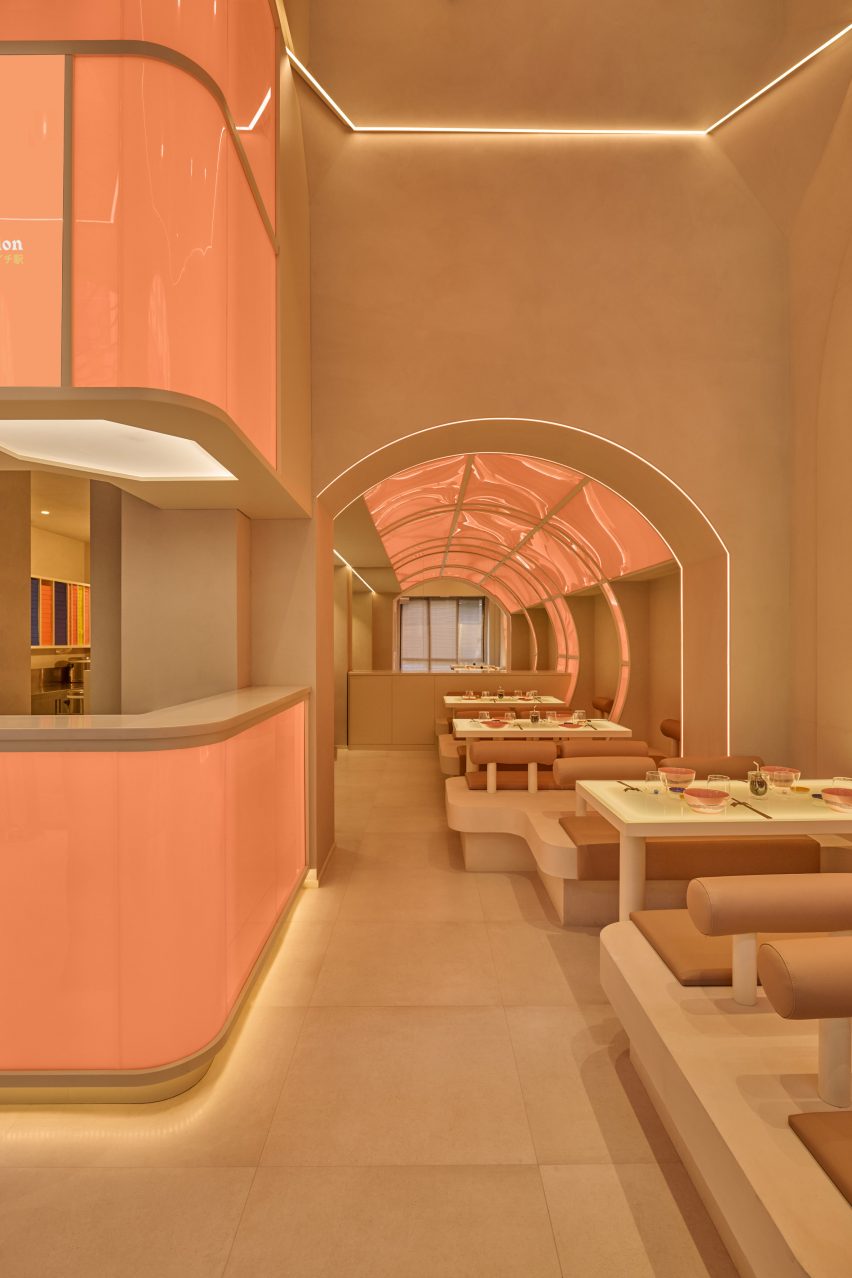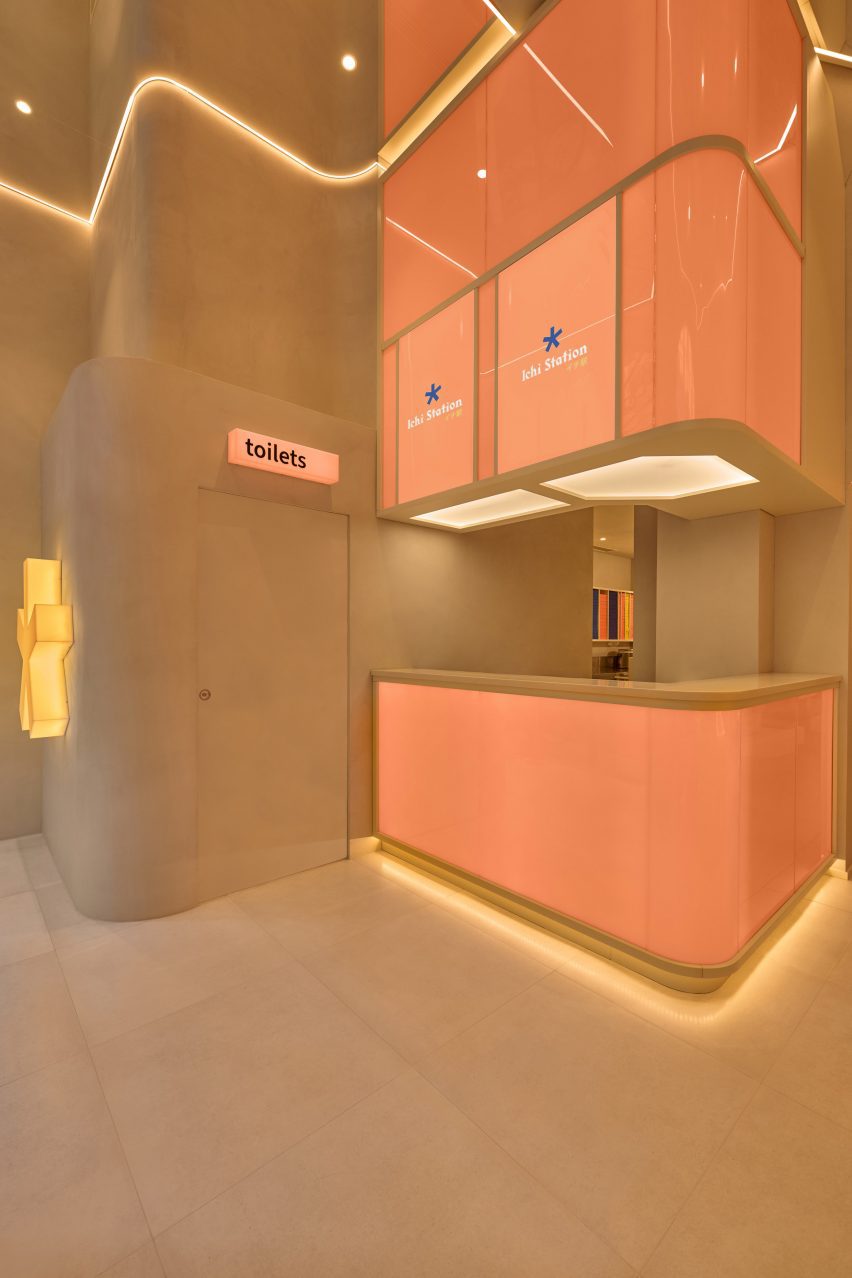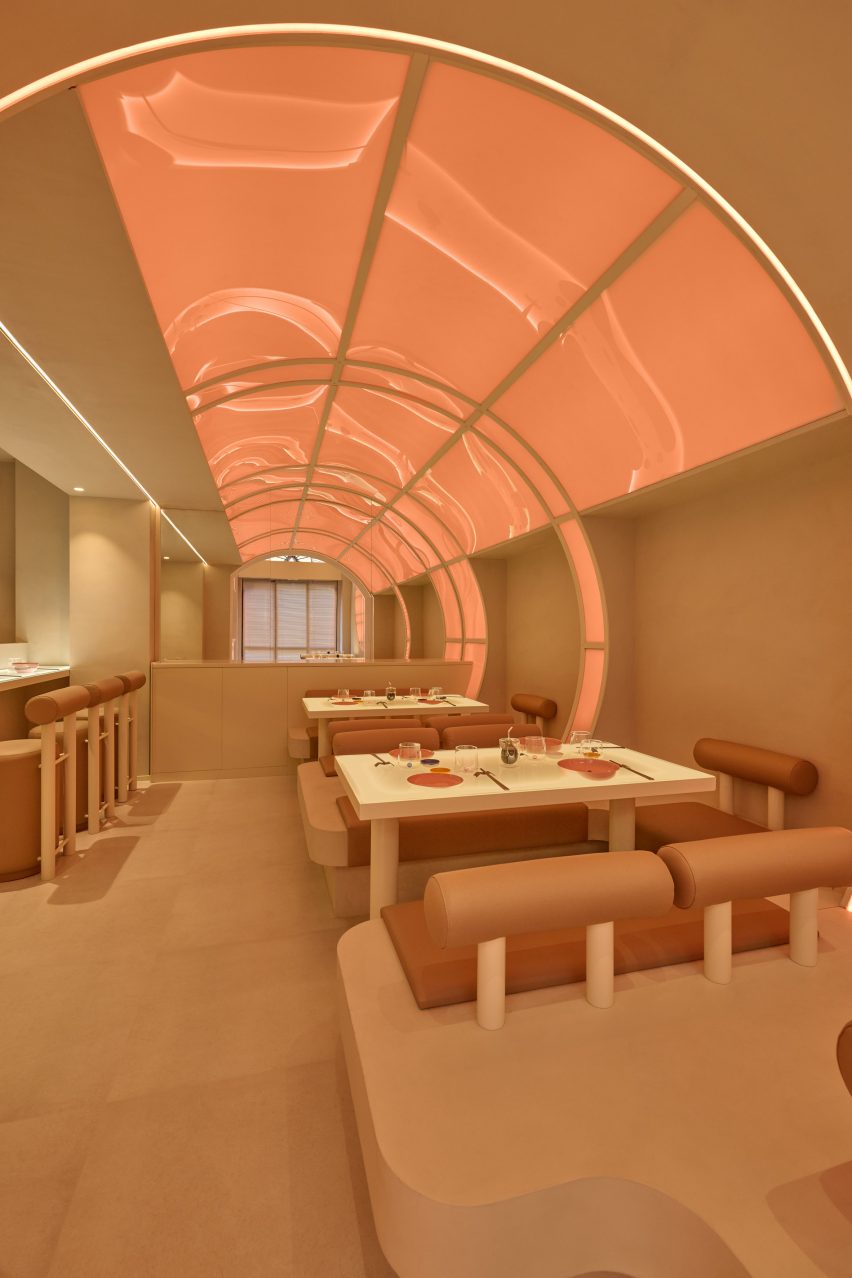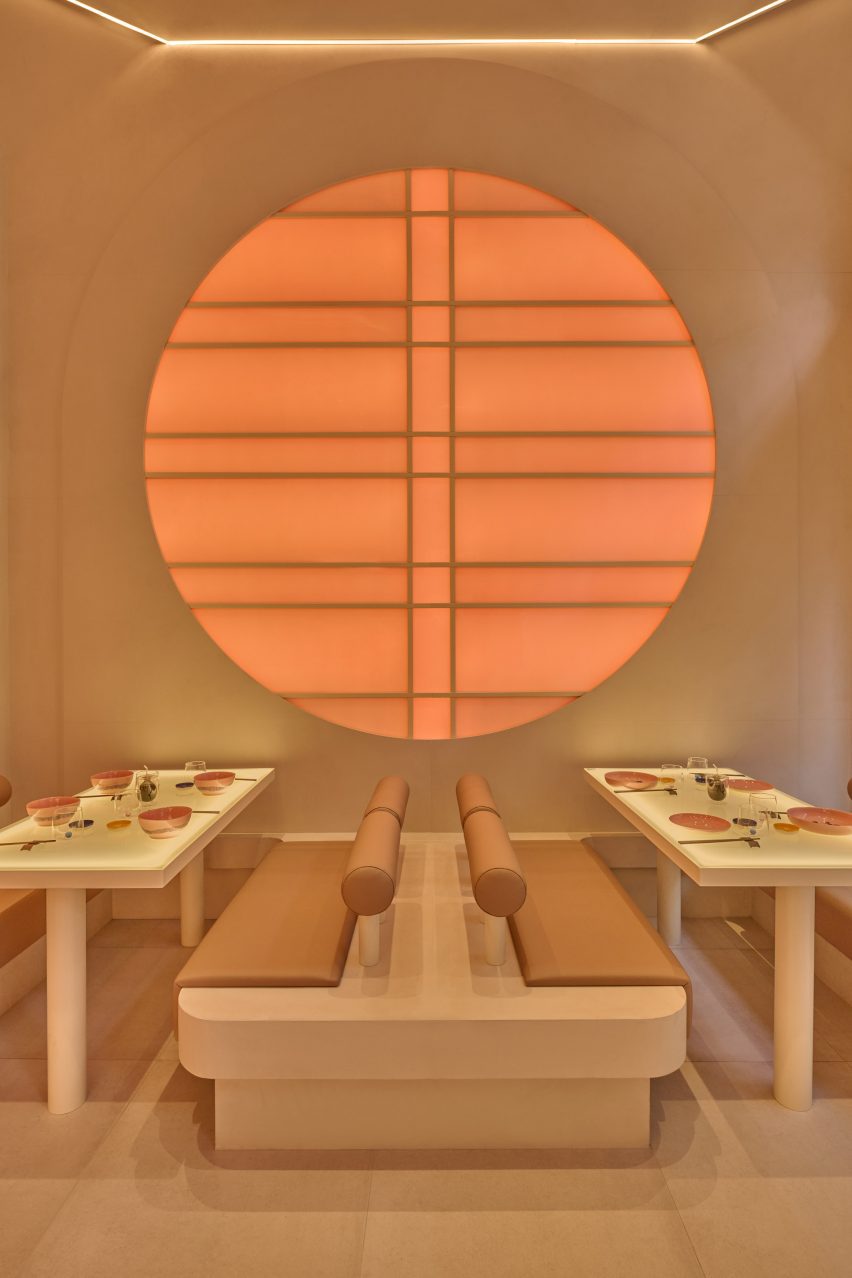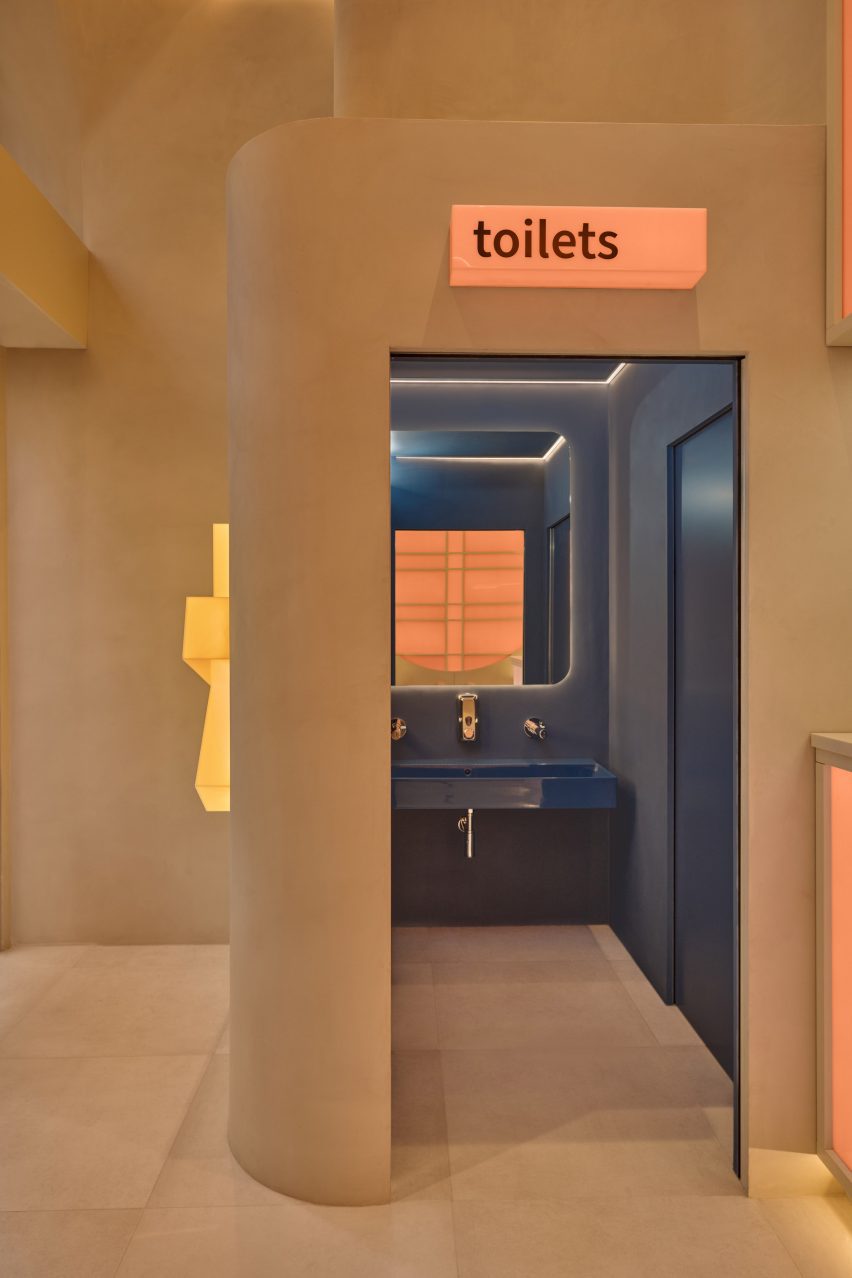Ember Locke hotel channels Kensington’s decadent heyday
Warm saturated colours and maximalist touches are combined inside Locke Hotels’ latest outpost in west London, designed by local studios Atelier Ochre and House of Dré.
Occupying an imposing Victorian mansion block in Kensington, the Ember Locke hotel was designed as a homage to some of the area’s historic architecture.

Among the references brought in by the designers were the art deco Kensington Roof Gardens and the now-defunct Biba department store, which rose to popularity in the Swinging Sixties.
“We wanted to create interiors that are an extension and interpretation of the neighbourhood, a space that reflects the cultural heritage of Kensington but also somewhere that shows the area’s evolution over time,” Atelier Ochre founder Pauline Dellemotte told Dezeen.
“We wanted to delve into the world of bold patterns, rich colours, eclectic furniture and art deco details, to tap into the sense of opulence that once dominated the Kensington scene.”
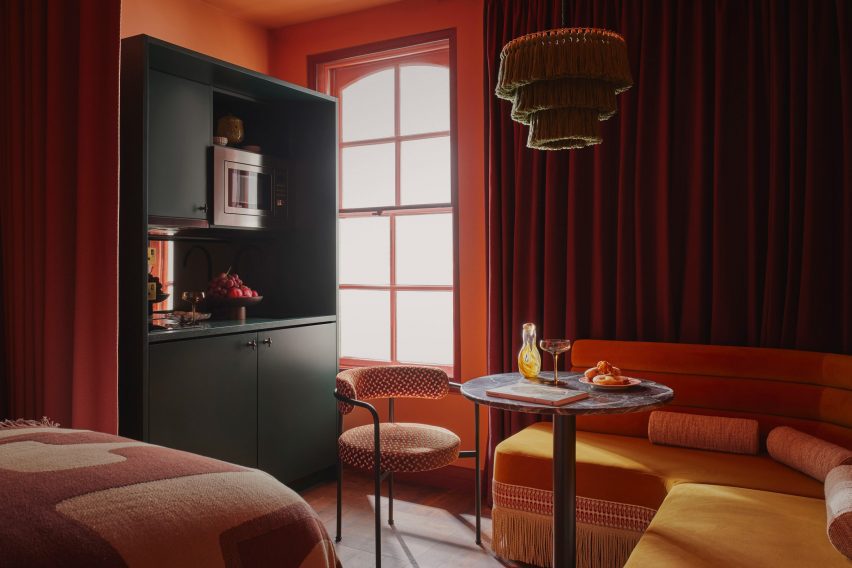
Instead of traditional guest rooms, Ember Locke accommodates 121 serviced apartments over eight floors, alongside a bakery, restaurant and conservatory cocktail bar, a stage for live performances, a co-working space, a gym and a garden.
Its interiors were designed to offer a contrast to the hotel’s location on bustling Cromwell Road – home to three of London’s most important museums including the V&A and the Natural History Museum.
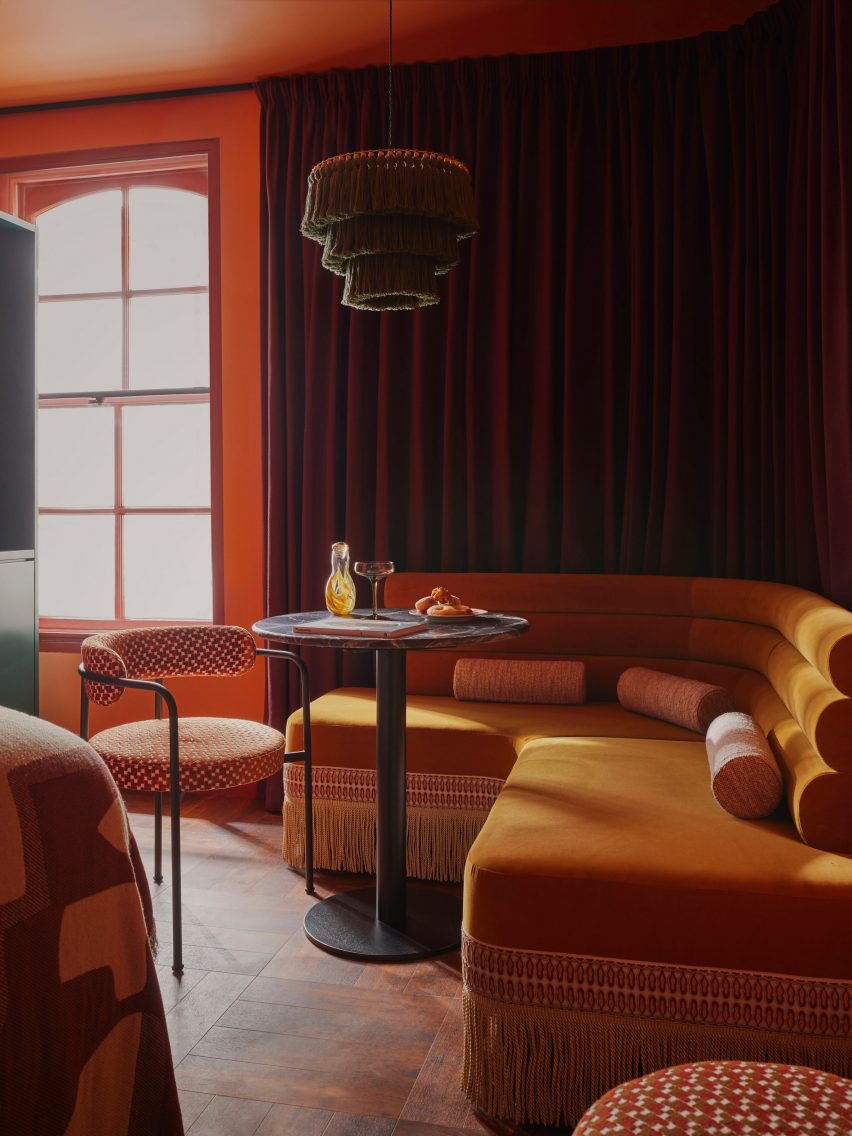
The building’s original arch-topped windows are mirrored in the arches and curves found in each room, from tubular-backed banquettes and chairs to the sculptural meandering clothes rail of the deconstructed wardrobe.
“The curved edges of the banquette, the rotating mirror and the wardrobe rail are attempts to combine the unlikely trio of playfulness, comfort and practicality,” said House of Dré founder Andreas Christodoulou.
“We’ve introduced some bold furniture and sculptural objects to spark a sense of curiosity and playfulness, and to allow guests to interact and reflect themselves within the space,” Dellemotte added.
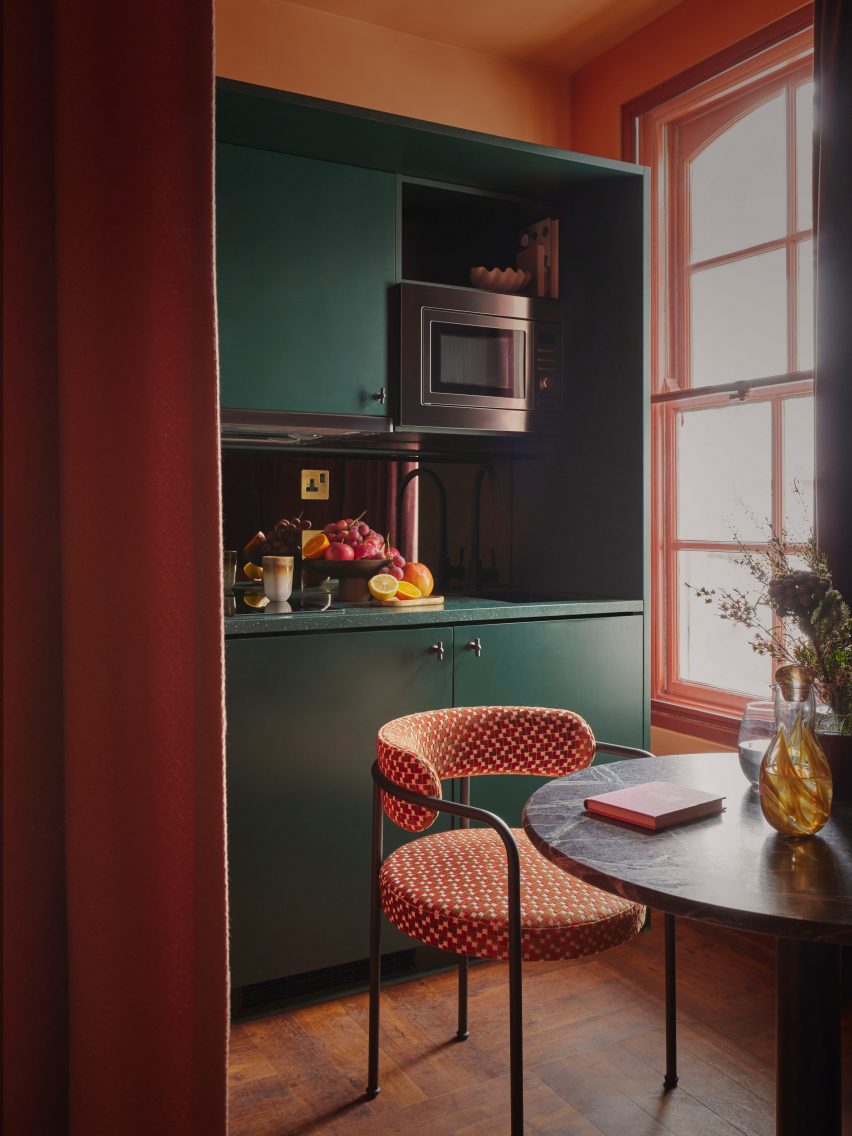
The velvet banquettes are trimmed with ultra-long fringing, echoed by the fringed pendant lights that hang low above the circular table in each room to zone the seating area.
Brass detailing across coat hooks, wall lights and clothes rails adds to the sense of opulent modernity.
An intense colour palette, which layers red, orange and mustard tones, is offset by the deep green of the apartment kitchenettes, highlighting the more practical nature of this area.
“With the fringing and warm earthy colours, the rooms flirt with maximalism but still possess the calm and contemporary sophistication that one would expect from a Locke hotel,” said Christodoulou.
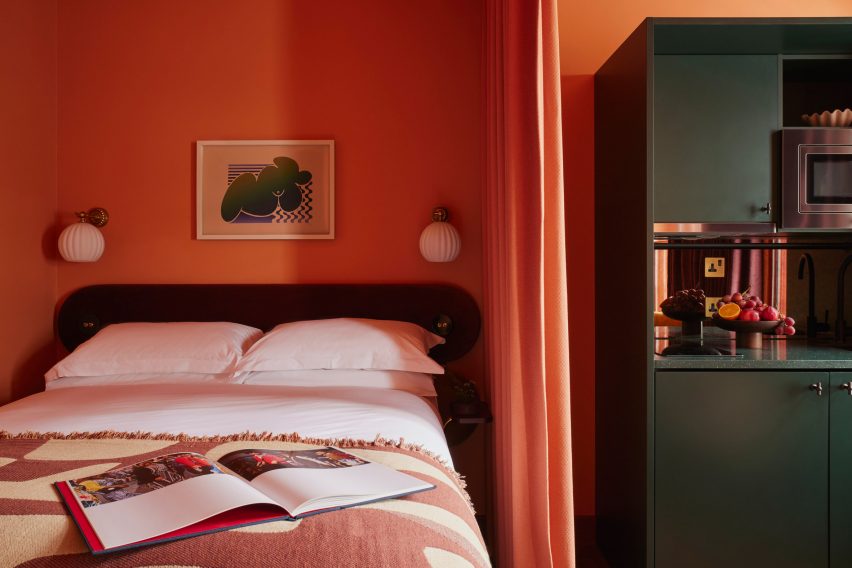
Heavy recycled-cotton curtains in a claret colour, custom-created by London textile company Yarn Collective, track around the walls and create a flexible room divider, separating the bed and kitchen areas when needed.
Many of the communal spaces feature art by local and up-and-coming artists alongside specially created works by House of Dré.
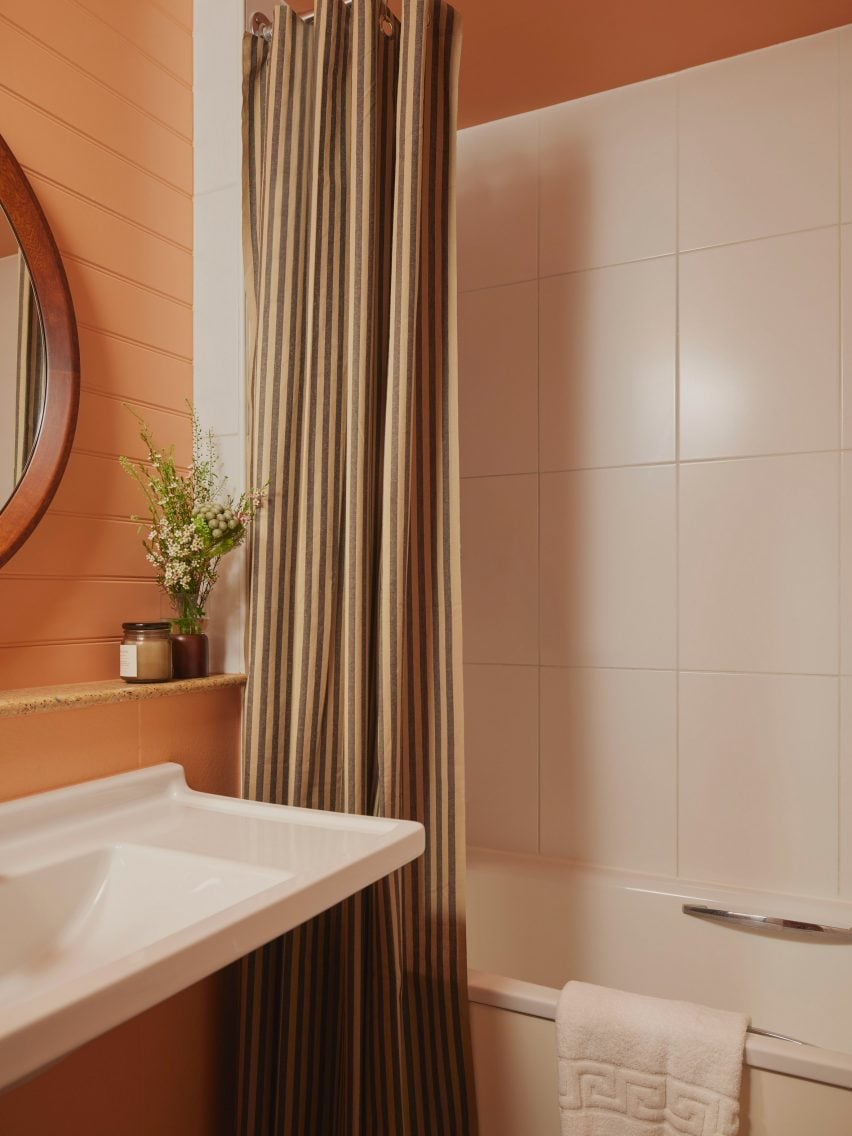
The project was a close creative collaboration between Dellemotte and Christodoulou.
“We are old friends who met at a previous practice,” said Dellemotte. “Our friendship grew to include exciting collaborations across hospitality projects, where we combined our passions for design and art.”
“At Ember Locke, we’ve been given the opportunity to blend the interior aesthetics and art curation of the spaces with the overall branding of the hotel in a holistic way.”
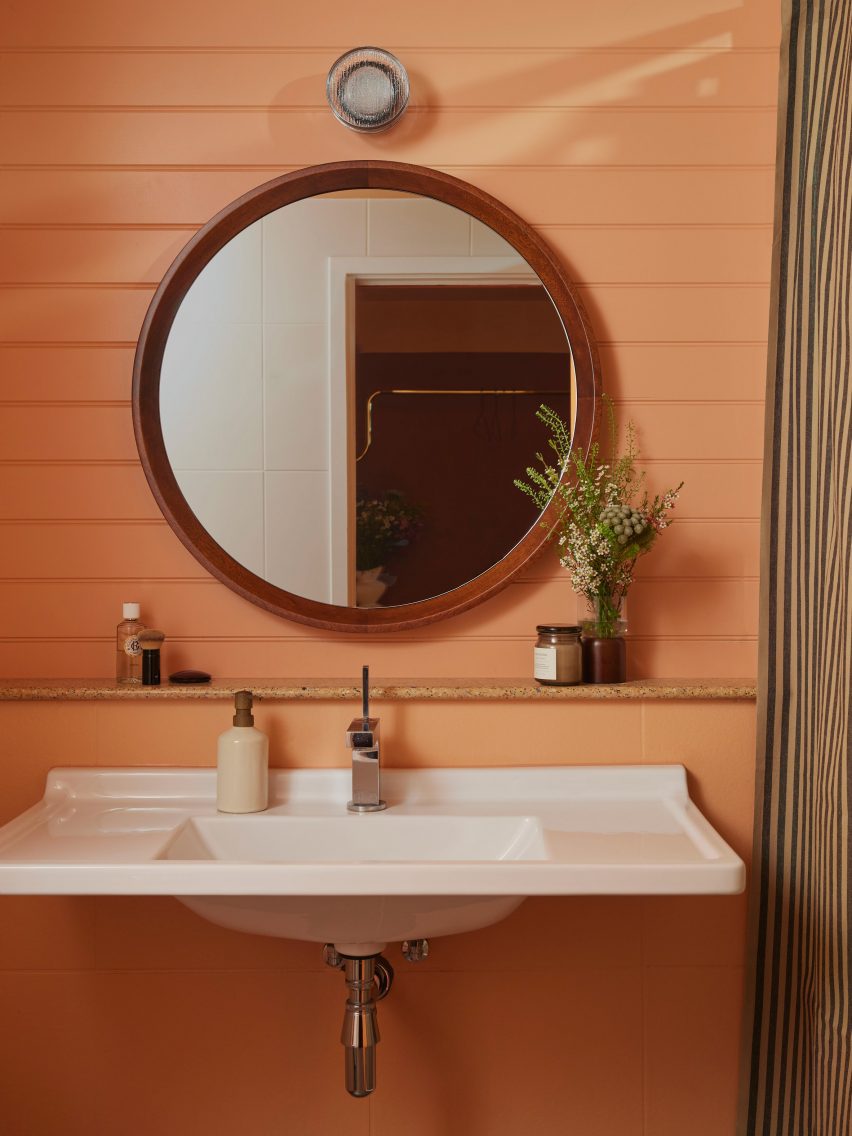
Locke Hotels already has a number of other outposts in London. Among them is one in Bermondsey – with interiors designed by Holloway Li to echo sunny California deserts – and one near St Paul’s Cathedral that is housed in a converted 1970s office block.
The photography is by Kensington Leverne

